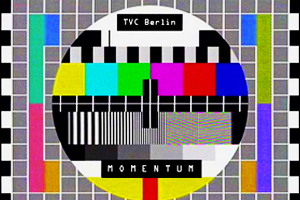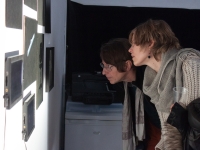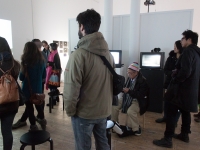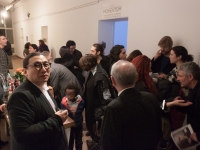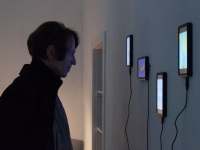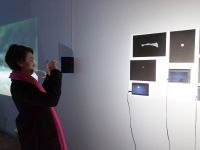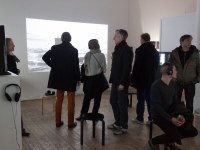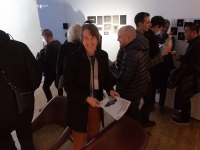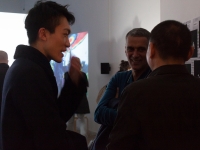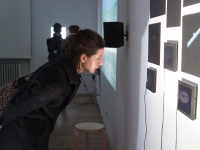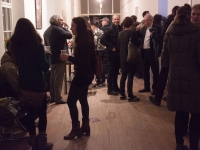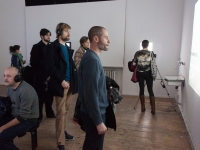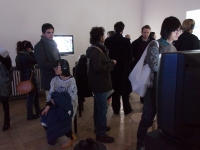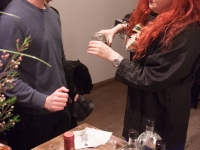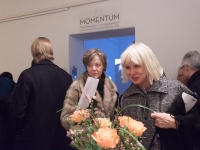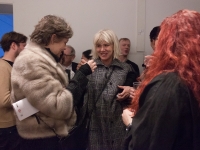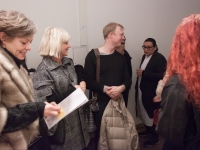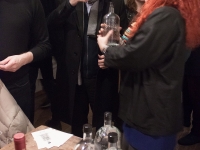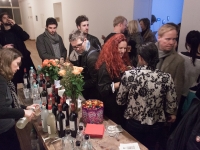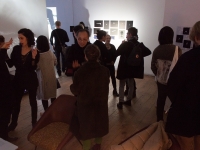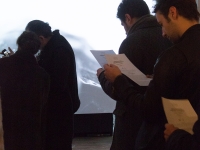CREATING FOR THE FUTURE:
THINKING ABOUT THE UNTHINKABLE
@ MOMENTUM BERLIN
Online & Print Exhibition
Curated by Cao Dan and Li Zhenhua
 |
 |
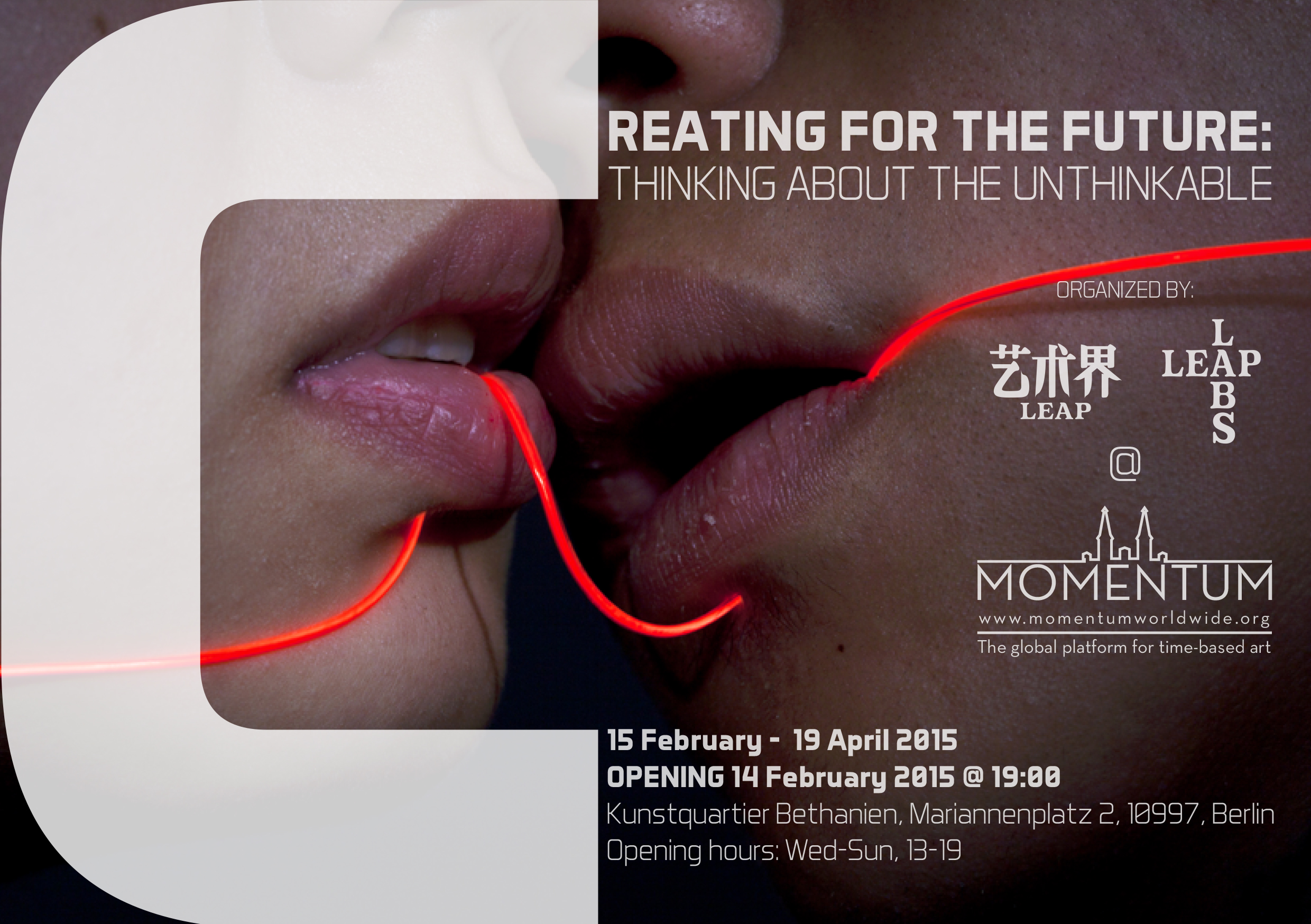
Web-site for the Online Exhibition
 |
Featuring:
Aaajiao • Addie Wagenknecht • Bi Rongrong • Chen Dongfan • Chen Xiao
Cheng Ran • Danh Vo • David Siepert + Stefan Baltensperger • Feng Bingyi
Frank Tang • Hu Weiyi • Iris Long + Cedar Zhou • Jiang Jun
9mouth • Liao Wenfeng • Liu Guoqiang • Quynh Dong • Shi Yijie
Shi Yong • Song Ta • Tan Tian • Wu Juehui • Xu Qu • Yang Junling • Yuan Keru
(click on the icons below to read the full information about each work)
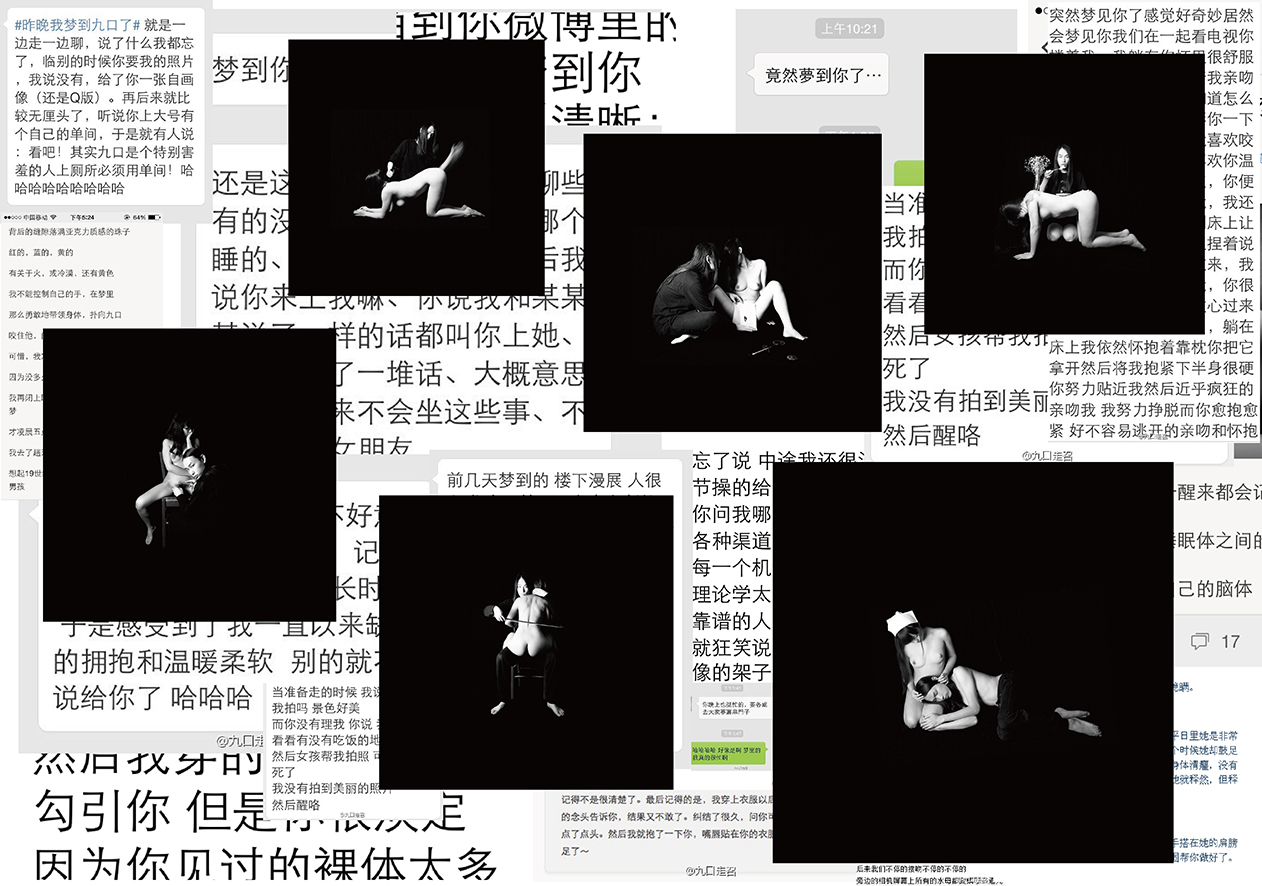
|
9mouth Website 9mouth, born 1988 in Jingzhou, China, is a photographer who now lives in Beijing. Taking photography as an expressive method and an artistic language, he documents the awakening self-awareness of contemporary females, as well as engages with the current reality. 9mouth has obtained the Outstanding Photographer Award at The 5th China Jinan International Photography Biennial and has been selected to be on as one of the Post–85s Elite List which is held by the renowned City Pictorial magazine. At the same time, he has self-published “Youth”, “After”, “Emma” and “F Love.” His work in Today Art Museum, Three Shadows Photography Art Center, Aura Gallery, Msbad Space, and many other places. Moreover, 9mouth is also works as a free-lancer writer and model who has worked closely with many clients such as Fujifilm, Lane Crawford, MaxMara, I.T, Lomography and other brands. |
#Last night I dreamed 9mouth# I don’t know when it started, but there are always people on microblogs sending me private messages saying that they dreamt of me. There’s more and more of them, and their dreams are many and varied (of course, erotic dreams are more common). So I started the topic #Last Night I Dreamt Of 9months, recording the respondents’ dreams and collecting more and more of them. I’m the type of person who dreams every time I sleep, and I began to look for connections between these dreams. So I combined my dreams and theirs, creating a response to their dreams of me. |
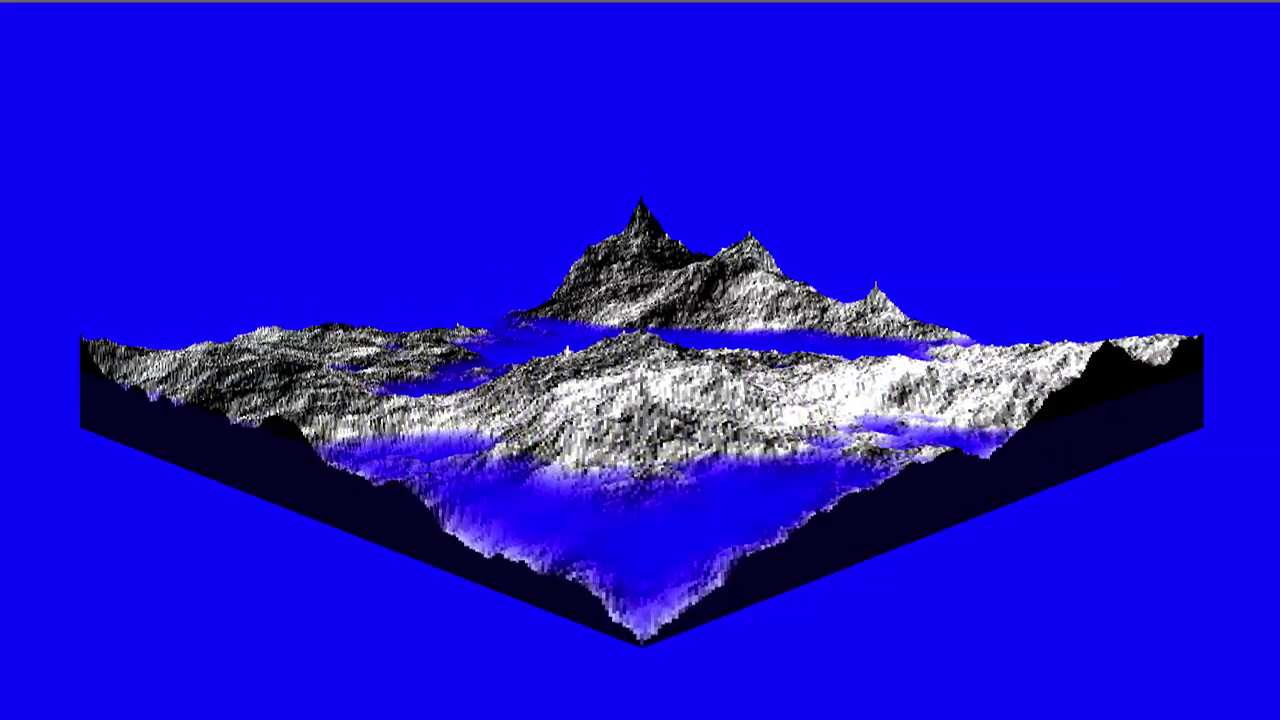
|
aaajiao Website Aaajiao (Xu Wenkai) (b. 1984, Xi’an) is one of China’s foremost media artists, bloggers and free culture developers. Having studied physics and computers, Xu Wenkai is self-taught as an artist and new media entrepreneur. In his works he focuses on the use of data and its various forms of display. In 2003 he established the sound art website cornersound.com and in 2006 he founded the Chinese take on the blog We Make Money Not Art: We Need Money Not Art. He is devoted to Processing, an open-source visual programming software, Dorkbot, a non-profit initiative for creative minds and Eventstructure, an interdisciplinary center for art, media, technology and academic research based in Shanghai and founded by Xu. In his works, Aaajiao focuses on the use of data and its various forms of display and on the processes of transforming content from reality to data and back again. His most significant contribution to the field of new media in China is a social one, as he act a as a vector for the interpretation and communication of international and local trends in the artistic use of software. Recent exhibitions include his solo-show titled ‘The Screen generation’, at C Space (2013) and chi K11 Art Space in Shanghai and at 9m2 Museum in Beijing (2014) and group-exhibitions ” PANDAMONIUM – Media Art From Shanghai” (Momentum, Berlin, German, 2014) and ‘TRANSCIENCE – INTRACTABLE OBJECTS’ at Taikang Space in Beijing (2014). |
Limited Landscape, Unlimited “Finite Limitless Landscape” comes at the end of the “Object” series. The landscape on the screen rises and falls in and out of a blue screen, allowing the colour blue to represent both the sea level and its theoretical implication of immateriality. |
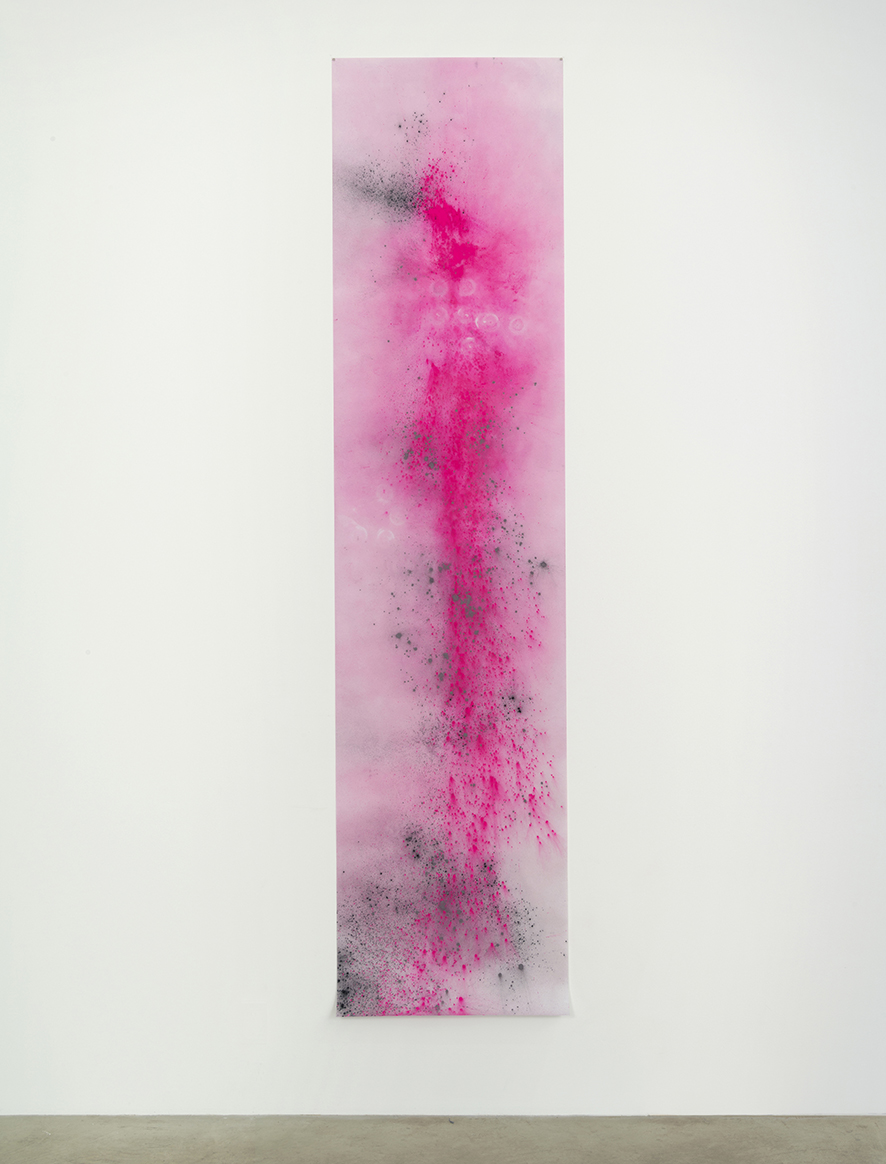
|
Addie Wagenknecht Website Addie Wagenknecht (b. 1981, United States) is an artist who investigates the cultural connection between technology and social interaction. Constructing installations, interventions, paintings and sculpture, she reverse-engineers reality into condensed bits, building a space in between sculpture and lived experience. In her work, complexity, dark sides and hacked systems without rules emerge, as sharp wit collapses the conceptual distance between yes and no, or ones and zeros. Playing with the contemporary anxieties of post-Snowden information culture, she builds objects that contemplate power, beauty and networked consciousness. The recipient of a 2014 Andy Warhol Foundation grant, Wagenknecht is best known for leadership in the open source hardware movement, and as a member of the collective Free Art & Technology (F.A.T.) Lab. In 2007, she cofounded NORTD Labs, an international research and development collaborative with Stefan Hechenberger, which produces open source projects that have been used and built by millions worldwide. An emerging visual artist and member of F.A.T. Lab, her work has been exhibited internationally, including groups shows at the Museum of Modern Art and Phillips auction house in New York; LEAP, Berlin; Haus für electroniches Künste, Basel, Switzerland; MU Eindoven, The Netherlands; Istanbul biennial, Turkey; Museumsquartier and MAK in Vienna; Grey Area Foundation for the Arts, San Francisco; Gaîté Lyrique, Paris; Beit Ha’ir Museum, Tel Aviv, and many festivals such a Glitch 2014 at Rua Red gallery in Dublin. Her projects have been featured in a numerous papers, books, and magazines, including TIME, The Wall Street Journal, The New York Times, Art, Vanity Fair, BUST, Vice and The Economist. Past residencies have included Eyebeam Art + Technology Center, New York; Culture Lab at Newcastle University, UK; Hyperwerk Institute for PostIndustrial Design in Switzerland, and the Frank-Ratchye STUDIO for Creative Inquiry at Carnegie Mellon University. Presently chair of the MIT Open Hardware Summit, she holds a Masters from the NYU Interactive Telecommunications Program and a BS in computer science from the University of Oregon. Wagenknecht’s first solo exhibition in the US, Shellshock, will open November 2014 at bitforms gallery in New York. Wagenknecht lives and works in Austria. |
Agras Dusk Blackhawk is a tool-assisted activist drawing series started by the artist in 2007. The process uses simple flying instructions such as “roll over”, “take off” and “touch down”. The new work is a fusion of heat and ultraviolet rays, clearly showing the artist’s initial explorations of propylene on canvas. Photo courtesy: bitforms gallery, New York. |
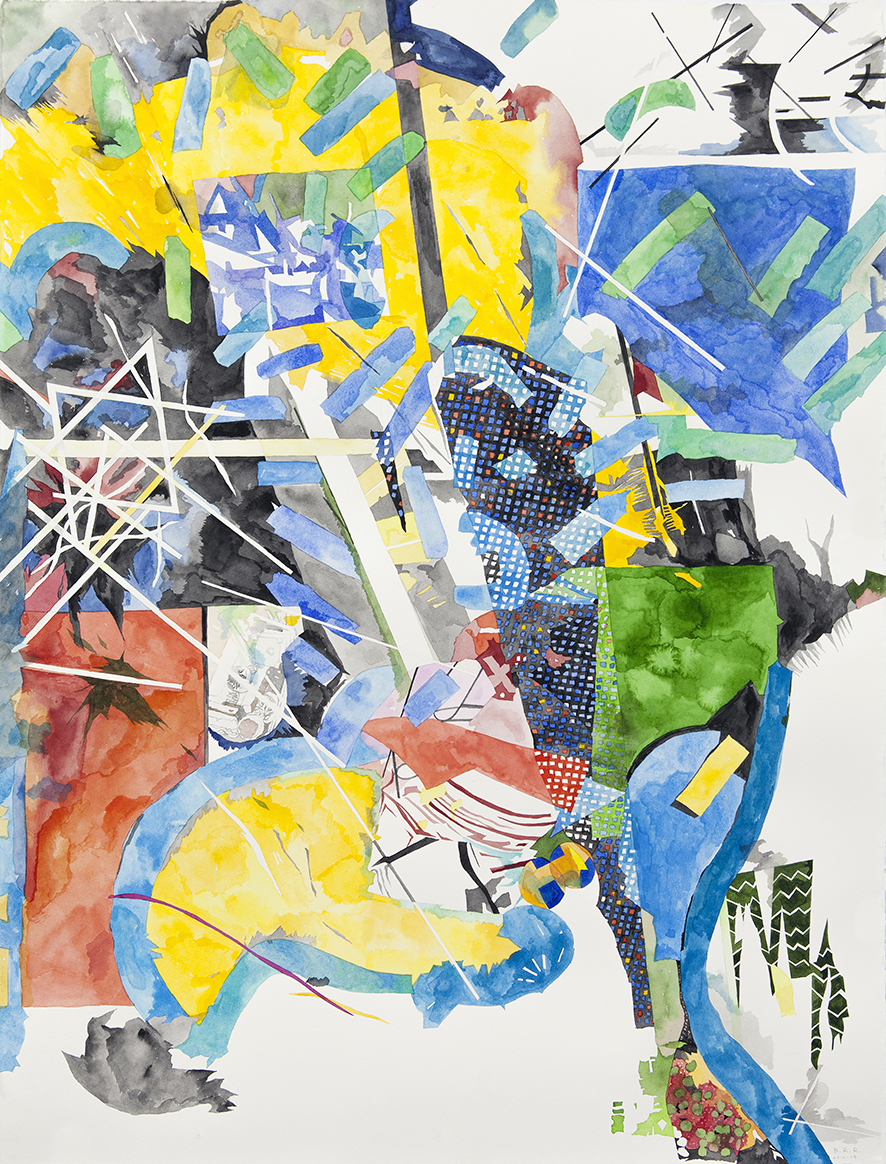
|
Bi Rongrong Born in 1982 in Ningbo, Zhejiang, lives and works in Shanghai. 2008 Master of Chinese painting, Sichuan University, 2010 Master of Painting Department of the Netherlands Frank Mohr Institute, after graduation have participated in artist residency program in the Netherlands, France and the United Kingdom. Had participated in the exhibition there: “The Landscape is Called Sweet Faith” (Museum aan de A7, Netherlands, 2011), “Zone Autonome Mutualisee” (Vivarium, France, 2012), “gas station five” (Vanguard Gallery, Shanghai, 2012), “boom” (Bund 18 temporary Art Space, Shanghai, 2013), “7: 3 Colors” (World Financial Center, Shanghai, 2013), “out of bounds” (Shanghai Gallery of Art, Shanghai, 2014), the “shadow shapes “(Quartet Contemporary Art Center, Nanjing, 2014)” Personal collectivism “(around the gallery, Shanghai, 2014) and so on. |
A Letter to Future—Manchester CMYK 04/14 Outside, scenery and objects unceasingly flit past. It is indistinct in its overlapping, distinct inits distance, leaping in its rapid change, beautiful in its unfamiliarity, yet profound in its familiarity. Countless fragments gradually cause it to take shape, or settle, or hover, being sought after, being forgotten. I fold it, open it, extend it. Toward it, I am determined, and I am unsure. |
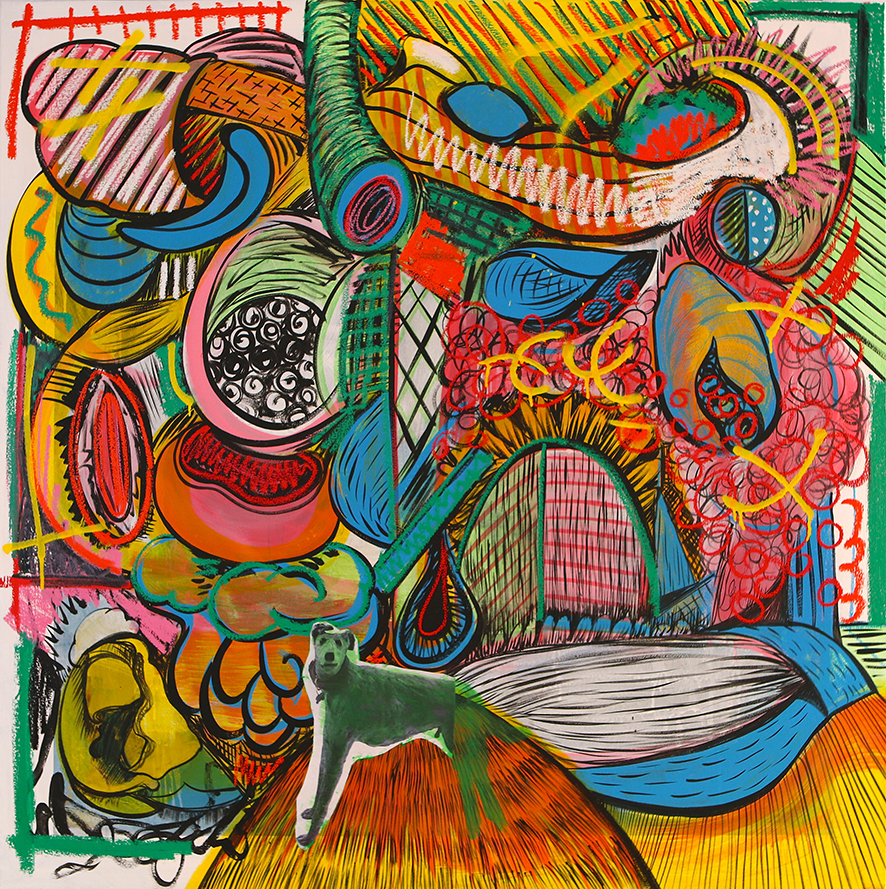
|
Chen Dongfan Graduated in China Academy of Art, Chen Dongfan works and lives in New York and Hang Zhou. |
X+!=Thinking about the Unthinkable 。。。。!。。。。。,****——-+++++!But+++++++++++++,and furthermore——————:Yet@@@@@@@@@@@@@,and also% …………^^^^^^******$!Perhaps!@@!!——–,thereforeXXXXXXXXXXXXX。One may@-@,and one may also 0000000,in the hope that ******——1+2i33wuhdwebcoew\\23@#$&%。。。。。。。。¥。Finally,《unspeakable, error》??》{@#!!!! |
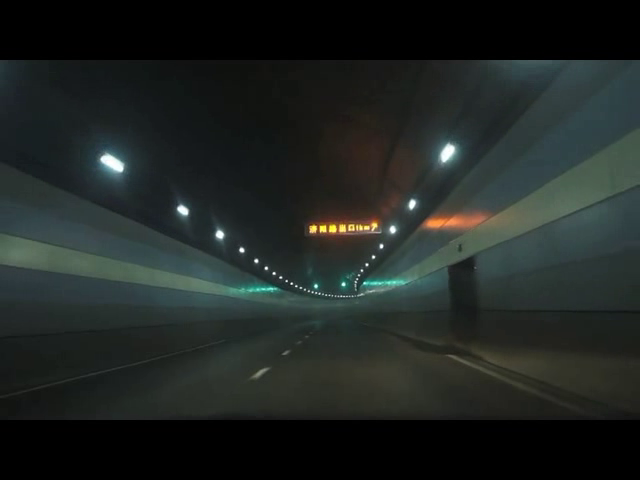
|
Chen Xiao Chen Xiao was born in Shanghai in 1984. |
A Terrible Beauty Now and in time to be, – Yeats |

|
Cheng Ran Cheng Ran was born in Inner Mongolia in 1981 and is currently based in Hangzhou (China) and Amsterdam. In 2013, He has participated in the Residency Artists Studio Project in the Rijksakademie van Beeldende Kunsten in Amsterdam in Netherlands. Cheng’s oeuvre mostly consists of video and film, as well as photography and installation works. Cheng’s video works are praised for its eclectic form in which films are integrated into the poetic culture of contemporary age. His works convey a young perspective on the unsolvable issues in life, such as problems regarding identity, and life and death, and the anguish felt by young Chinese people living through the globalized Chinese culture and cultural policy. Recent exhibitions include KINO DER KUNST film festival in Munich, Germany, and also the 26th European Media Art Festival in Osnabrück, Germany “Moving Image in China: 1988-2011 (a retrospective that surveys the brief history of Chinese video art, Minsheng Art Museum, Shanghai, 2011), “Farewell to Post-colonialism: The Third Guangzhou Triennial” (Guangdong Art Museum, 2008), “The Tell-tale Heart” (James Cohan Gallery Shanghai and New York, 2010, 2011), “In A Perfect World…; (curated by former Hammer Museum curator James Elaine, Meulensteen Gallery, New York, 2011), etc.. Cheng Ran has also received a nomination for the “2013 Absolut Art Award”.In 2011, he won the “Best Video Artist”in Dead Rabbit Awards held by online art magazine Randian. In 2014, Cheng Ran received a nomination for “The Best Young Artist of this year” in The AAC Awards. |
“XXXXX”1/200 “XXXXXXXXXXX,XXXXXXXX,XXXXXXXXXXXXXXXXXXXXXXX, |
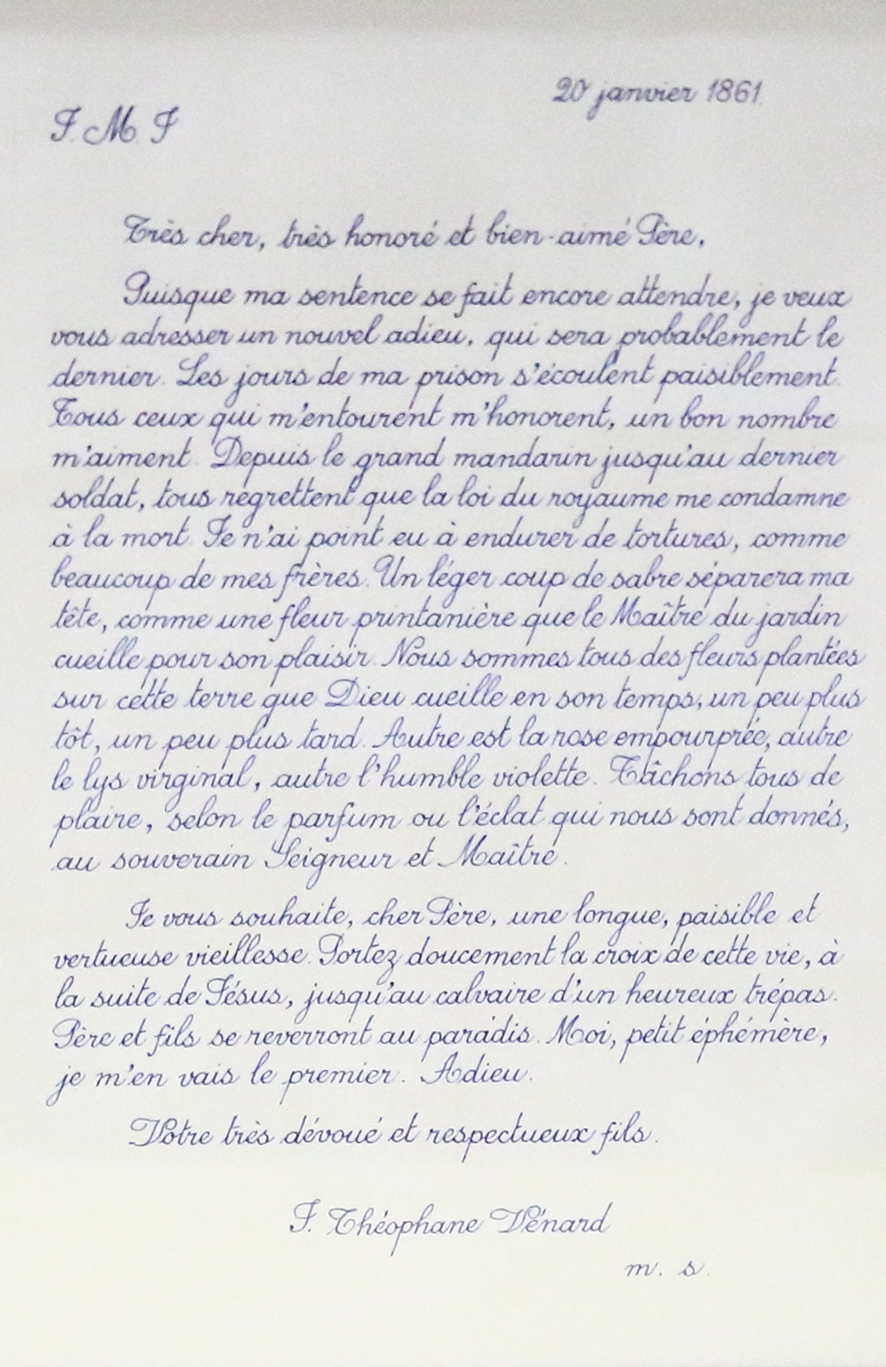
|
Danh Vo Danh Vo studied at the Royal Academy of Fine Arts, Denmark and the Städelschule, Frankfurt. He was the winner of the Hugo Boss Prize, New York (2012), the BlauOrange Kunstpreis der Deutschen Volksbanken und Raiffeisenbanken, Berlin, Germany (2007) and was a nominee for the Nationalgalerie Prize for Young Art, Berlin, Germany (2009). He participated in the Venice Biennale (2013) and has exhibited his work in such institutions as the Musée d’art moderne de la Ville de Paris, Paris (2013), the Art Institute of Chicago (2012), the Kunsthaus Bregenz, Austria (2012), the National Gallery of Denmark (2010), Kunsthalle Basel, Switzerland (2009), and the Stedelijk Museum, Amsterdam (2008). |
02.02.1861 The French missionary Saint Jean-Théophane Vénard sent a hand-written letter to his father before his martyrdom in Vietnam. Fu Dan’s co-operation with his father PhungVohas created this ongoing project, “02.02.1861”. |
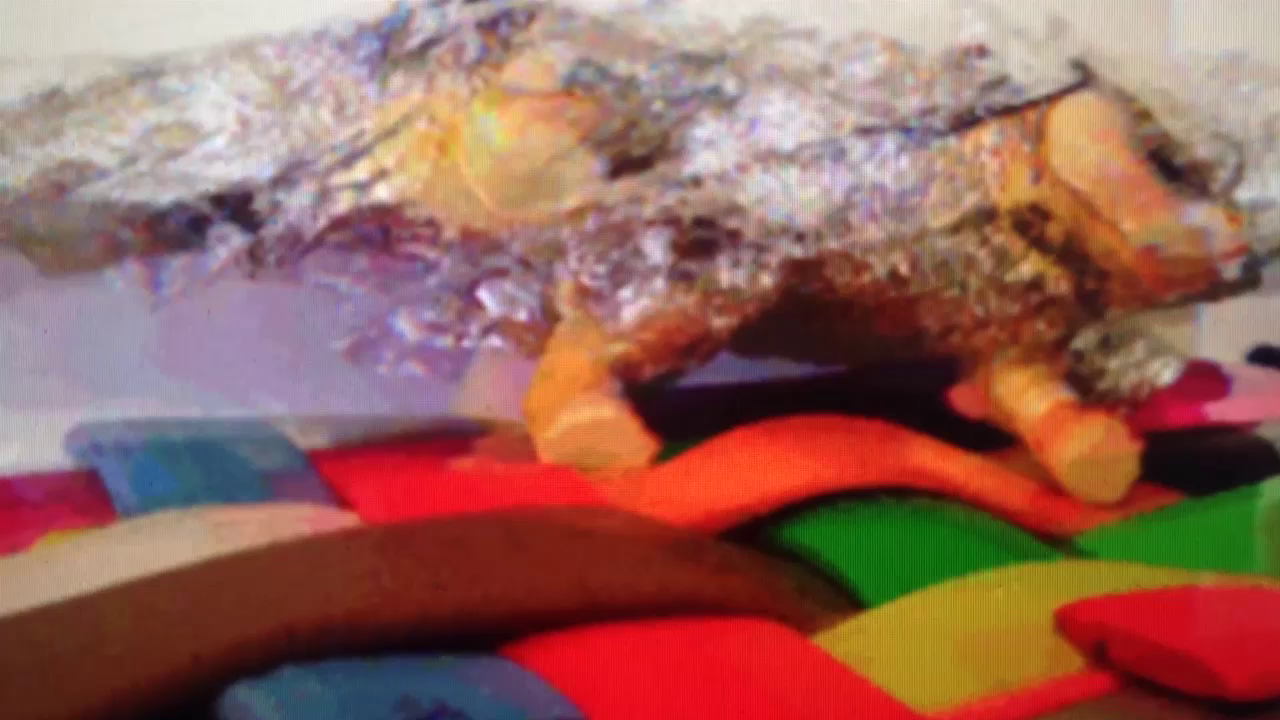
|
Feng Bingyi Feng Bingyi (b. 1991, Ningbo) is a young emerging talent in the Chinese art scene. Having studied under Yang Fudong at the China Academy of Art, she follows in his footsteps with her focus on cinematic traditions, while employing a poetic language. Distancing herself from the chains of external reality, she looks for inspiration within her internal impressions, which she expresses in the forms of installations, photography, documentary and animation. After receiving both the Outstanding Graduation Work Award and the China Academy of Art Scholarship from the China Academy of Fine Arts in Hangzhou in 2013, Feng continued her studies at the Chelsea College of Art and Design, University of the Arts in London in 2014. Though she has been exhibited in China alongside well-established contemporary artists, she has never before been shown in Berlin. |
Clitche Yesterday, they sprayed pesticide in an elevator. Because the day before, this elevator was filled with hundreds of insects. Three days ago, they cleaned the kitchen, and the trash piled up in the kitchen spawned these several hundred insects. So today, I feel dizzy. They don’t know that this orchid-fragranced pesticide has the same killing effect on androids. They have unwittingly become android hunters. They don’t know. Android hunters always sing this song to me. My speech has become cliché. Analysis is self-negation. They don’t know. Youth has no particular reference; this is a fuzzy concept, usually explained on some sort of pretext. If you don’t want to interpret it, “every individual can experience varying periods of stupidity” is probably nearest. |

|
Frank Tang Tang Kai Yiu is a Hong Kong based artist whose artworks look into the performative elements of Chinese painting. As an emerging artist, Tang received his Bachelor of Visual Arts(Hons) from Hong Kong Baptist University in 2010. In 2012, he won Louis Mak Chinese Painting Award and got Grant Award from Muses Foundation for Culture and Education Limited. In university, his works are well-recognised and that he won Yau Sang Cheong Chinese painting Award of AVA in 2009 and an AVA Award in SOLOS Graduation Show 2010. His artworks have exhibited in art organizations and galleries in Germany, Hong Kong, ShenZhen and Taiwan. |
Experience with Chinese Landscape Painting Each epoch, each person’s way of fulfilling the “Way” is different. For an artist in modern Hong Kong, the natural landscape has become a luxury good, and one must pay dearly in exchange for a small slice of mountain or seascape. Bringing a piece of paper and pen with him, he wanders around areas of everyday life drawing landscape paintings. This video recording engenders the tension between reality and the artist’s state of mind – he strives desperately to find a piece of tranquil landscape in this bustling metropolis, forcing himself to find the true meaning of fulfilling the “Way”, living in a dystopia of the heart. |
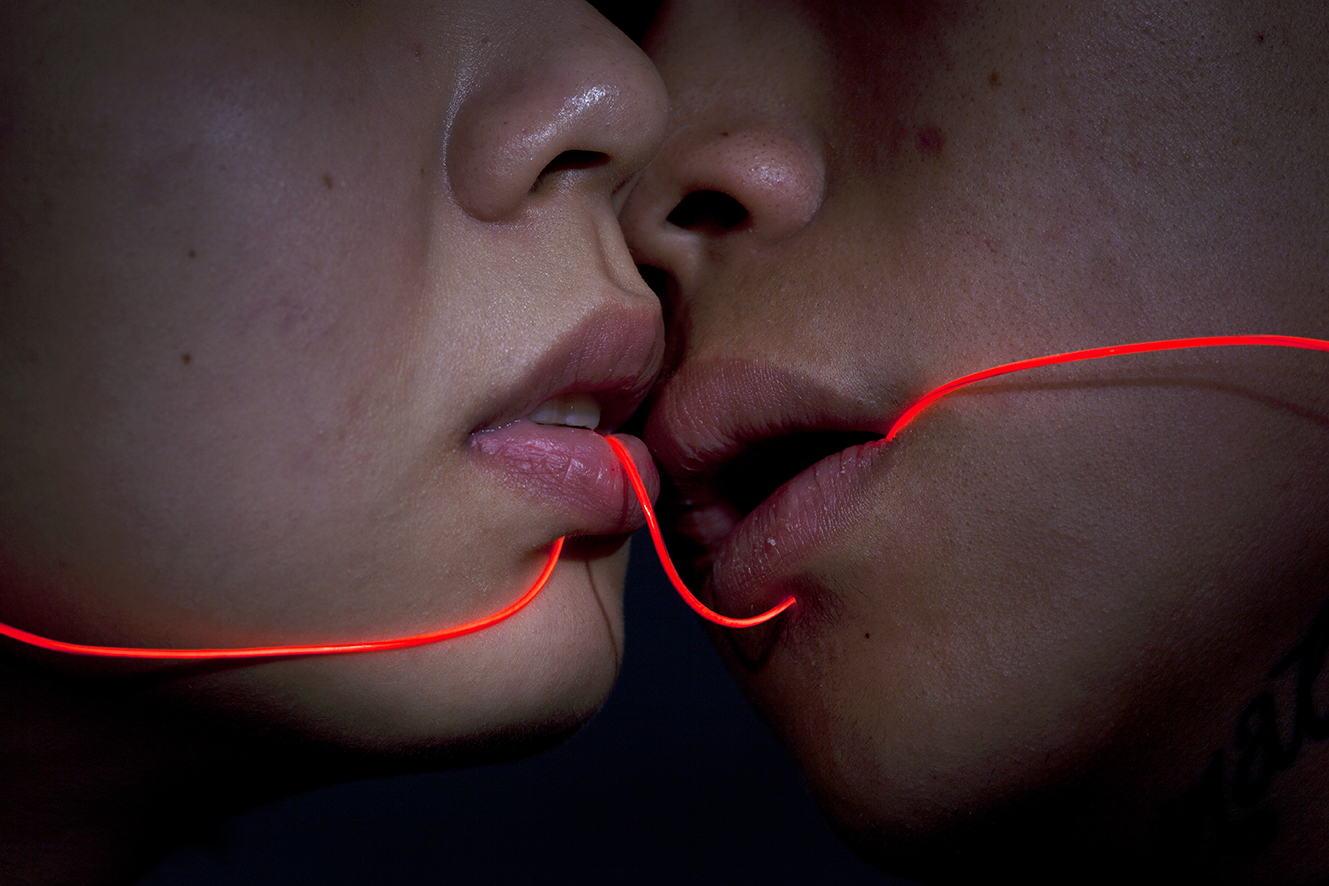
|
Hu Weiyi Hu Weiyi (b. 1990, Shanghai) is the son of Hu Jieming and now continuing his studies as a graduate student of Zhang Peili at the Media Department of the China Academy of Art, after having graduated from the Department of Public Art at the China Academy of Art in 2012. Hu is a multimedia artist and curator, whose work combines video, installation, sculpture, action, and sound. In 2012 he curated a young artists exhibition titled The Bad Land, in which the occupation of a public crossroad in Shanghai functioned to address the limits between art and life, public and private. Recent exhibitions include The Overlapping Reflection at the 2nd Zhujiajiao Contemporary Art Exhibition in Shanghai and The Summer Session at V2 in Rotterdam, both in 2013. His work has been shown for the first time during ‘PANDAMONIUM, Media Art from Shanghai’, organized by MOMENTUM in May 2014. |
Flirt “I Silently Wait For The Light To Pass Through Me” breaks the emerging style of the flattening of film. Spontaneous rays of light link people or objects together, forming shadows.Here the light becomes the source of an intrinsic connection, or a deeply-held fate, creating mutual connections between illuminated objects and people, reorganizing the possibilities between images, and creating narrative connections in the space. |
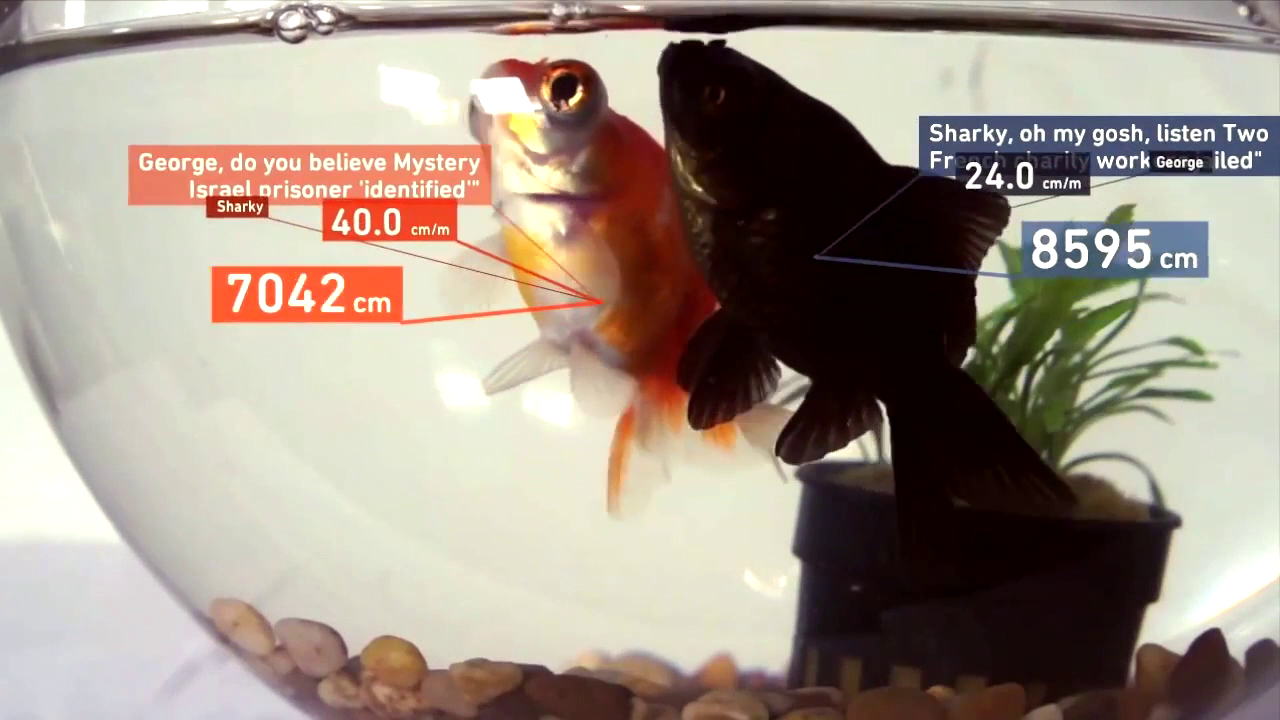
|
Iris Long & Cedar Zhou The work of I & C (Cedar and Iris) combines elements of computer science, visual art and storytelling, using real-world generated data to create multi-sensory experiences. They co-curated Information in Style: information visualisation in the UK, art and design exhibition at the CAFA Art Museum in 2013, and an archive data visualisation show about Chinese contemporary art, the CCAA WOW at Power Station of Art, Shanghai in 2014. They have also exhibited internationally at venues including Victoria and Albert Museum in London, UK, Waterman Art Centre in London, UK, OCT-LOFT Art Terminal, Shenzhen, China, and Audi City Beijing, China.Cedar has a MA degree from the Central Saint Martin Collage of Art and design, University of Arts London and a MFA from the Goldsmiths Collage, University of London. Iris has a master degree from the Royal College of Art. |
Surveillance Surveillance is a impromptu performance, co-operated with Sharky(red) and George(black). During the performance, Sharky & George are being tracked by a real-time analysis system indicating both their moving speed and distance covered by their movements. In the performance, Sharky & George are “talking” to each other on the latest news from online news service in real time. The news is up-dated in 10-second intervals. The real-time analysis system keeps track of Sharky & George’s movements, and project the processed information back onto them in real time. |
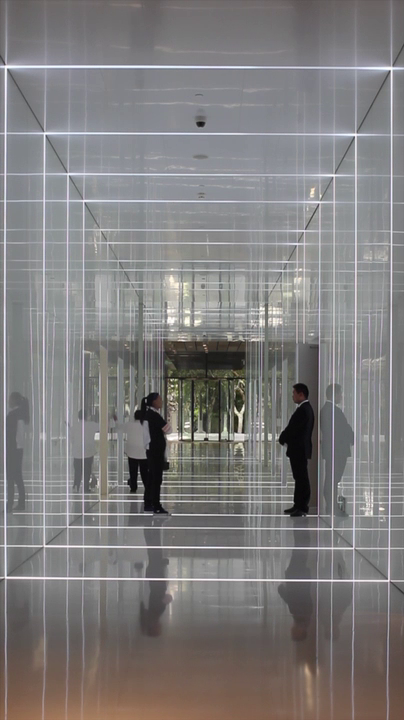
|
Jiang Jun Jun Jiang was born in Shanghai in 1982, graduated from Prof. Aernout Mik’s class at Kunstakademie Münster in 2013, received title Meisterschüler of Aernout Mik. Jiang currently lives and works in Beijing and Hangzhou. |
Shanghai SOHO Fuxing Plaza In the past few years, the aesthetic of the white box has gradually entered everyday spaces in China; new train stations, art galleries, subway stations, and shopping malls, all representing sterile, neutral, holy, pure experiences of space, indicating absolute modernity. At the same time, the white cubes of art spaces and of commercial spaces have blended together, forming a stereotyped and repetitive homogeneity. This work is a critique of these homogenous aesthetics. |
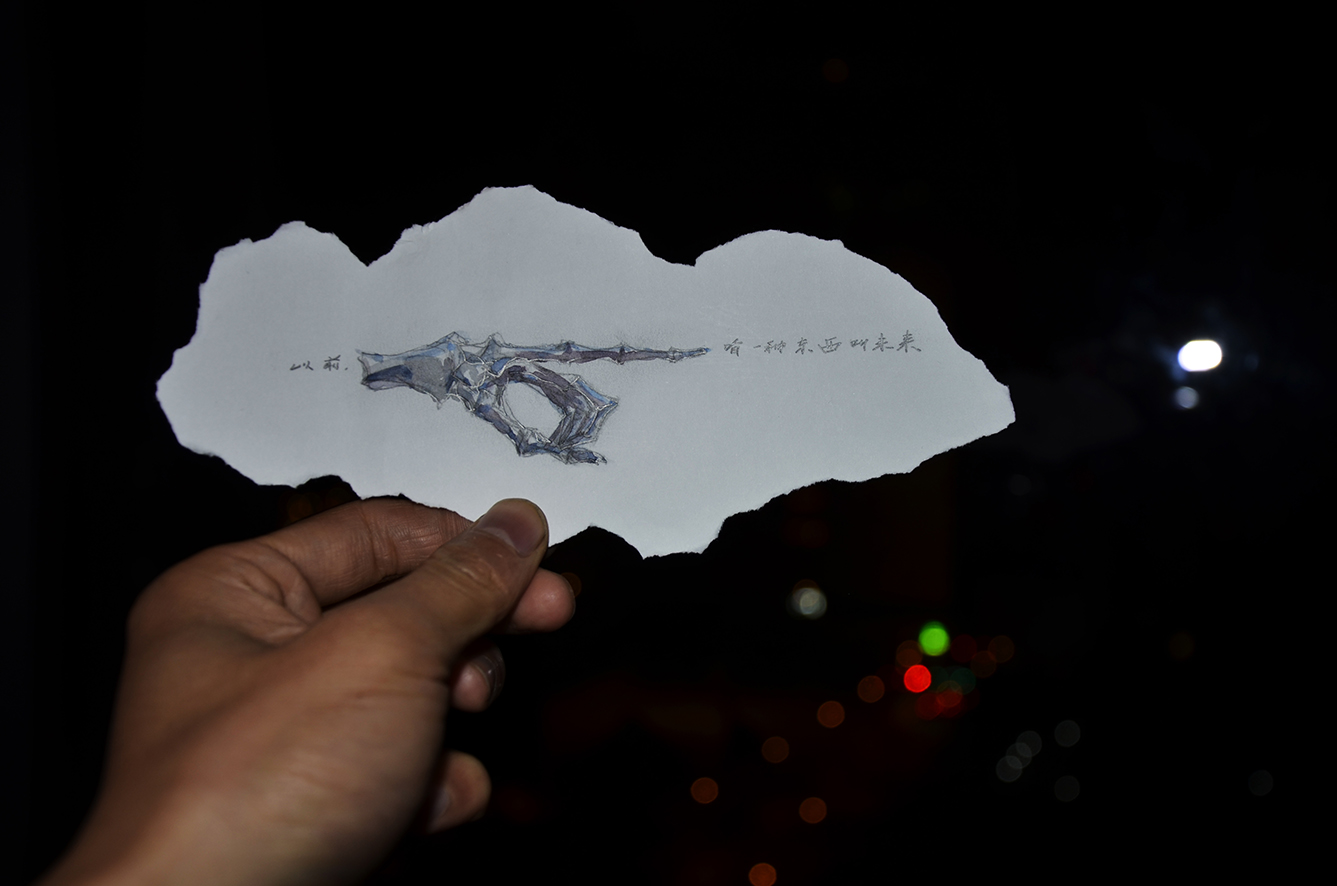
|
Liao Wenfeng Liao Wenfeng was born in Jiangxi Province (P.R.China) in 1984. In 2006 he graduated from the Total Art Studio of China Academy of Art in Hangzhou. He lived in Shanghai from 2006 to 2012. Since 2012 he lives in Berlin. |
Before, there was something called ‘Future’ |

|
Liu Guoqiang Liu Guoqiang, born in 1988, Shandong Province, China. Graduated from the Academy of Fine Arts now lives in Hangzhou. Important exhibitions: 2012 Beijing Today Art Museum “Future Career” Finalist 2012 Xinjiang Shanghai Museum of Contemporary Art Biennial 2014 “Earth memorandum” |
Public Bench Amidst hurried passers-by is an immobile bench, upon which restsa body that does not seem to flit by. With time compressed, the passers-by seem like spirits stopping by the wayside, the dust of nothingness. Speed is time, time is space, the two extremes of the bench and immobility, longing for travel, longing for stillness. A witness to time. |
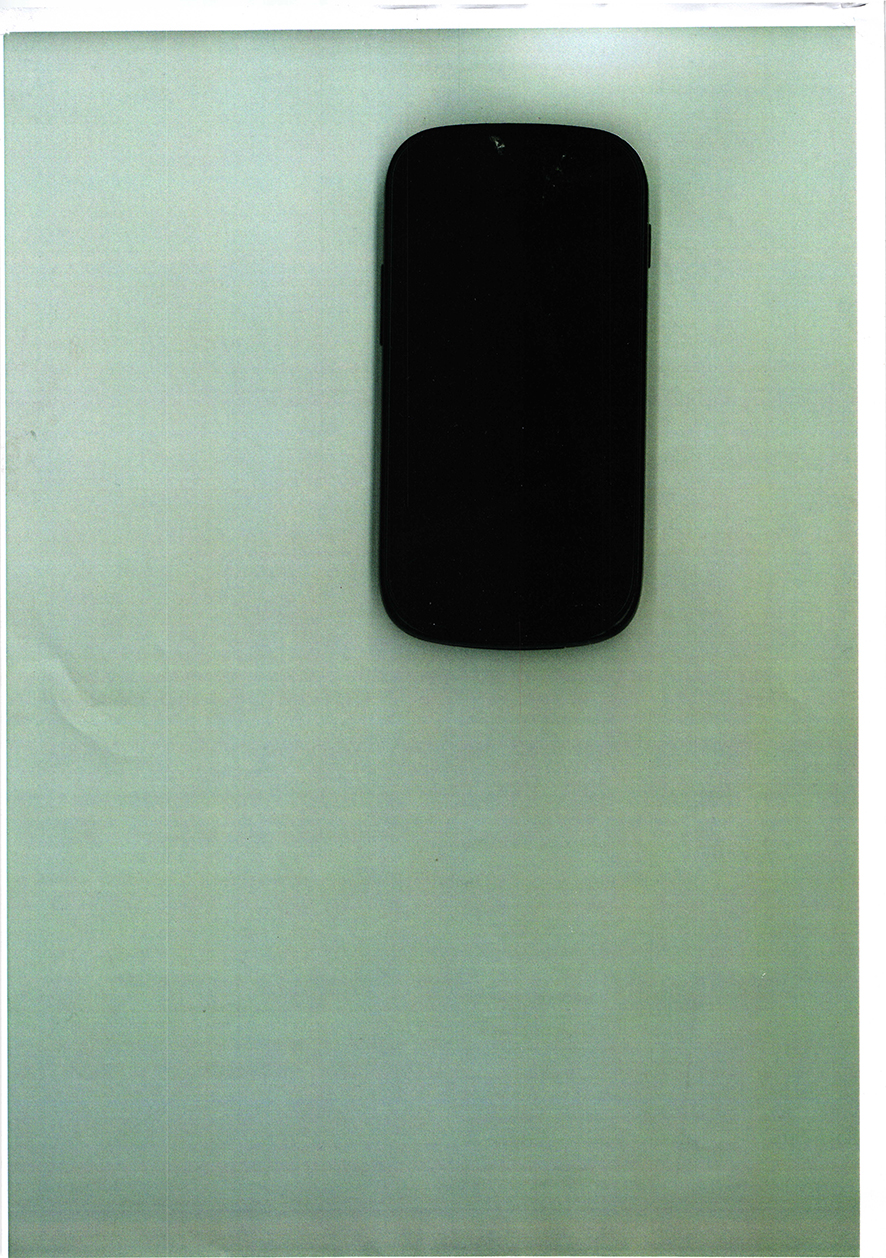
|
Quynh Dong Quynh Dong (originally Đồng Thị Như Quỳnh) was born on the 25 December 1982 in Hanoi’s seaport, Hai Phong, in Northern Vietnam. From 2000 to 2004 she attended the Design School in Biel/Bienne for a degree in graphic design, graduated with a Bachelor of Fine Arts at the Bern University of Arts and earned her Master of Arts in Fine Arts at the Zurich University of the Arts. Today Quynh Dong lives in Zürich, where she will work as a recipient of the BINZ39 award until 2012. In her work she examines the geographical shift of specific cultural elements from Vietnam to Switzerland and vice versa. Through performances, videos and watercolors her art is present at different places, institutions and festivals. In 2008 Quynh Dong’s work “Das Aquarium” (“The Aquarium“) won the Aeschlimann-Corti scholarship, and was subsequently shown at the Centre Pasquart Art Centre in Biel/Bienne. In 2009, during the performance festival Hesperides II at the Cantonal Museum for Fine Arts in Lausanne, Quynh Dong participated with “Mein Heimatland” (“My Home Country“) and “Gestern” (“Yesterday“), while Franz Erhard Walther presented his performance “5×2 Holzblöcke” (“5×2 Wooden Blocks“) (1969-2009). In 2010 she took part at the Swiss Art Award Basel. Dong was a Fellow in the Summeracademy 2011 in Zentrum Paul Klee Bern, where Pipilotti Rist was the curator. This year she will participate with a performance at The Young Art Fair in Basel. |
Adi and Herman at the barbecue party “Adi and Arman At the barbecue party” shows three camera-phone photos, and attempts to preserve the image on scrap paper. By displaying it on a blank screen, the artist questions the notion of “form”. |
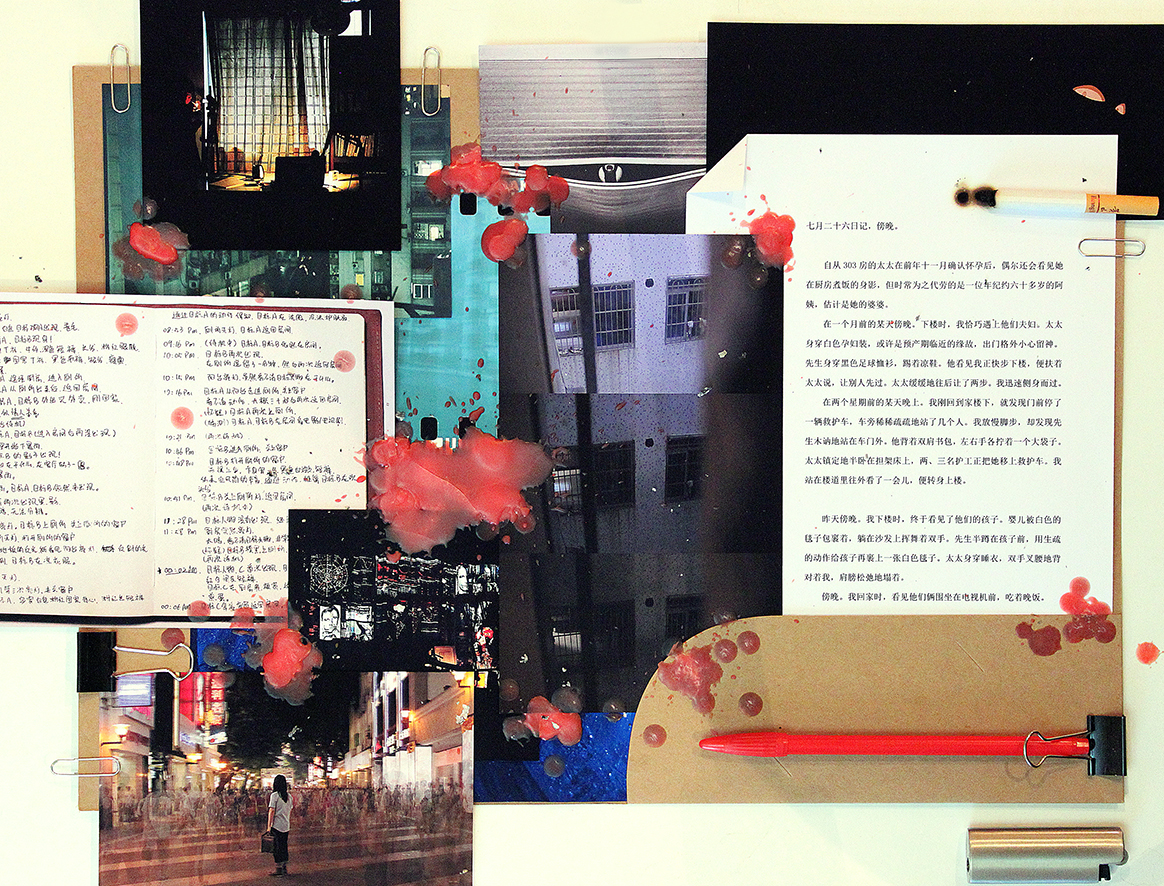
|
Shi Yijie Shi Yijie (b. 1989, Zhanjiang, Guang Zhou) graduated from Fine Arts Academy of Guangzhou, the Fifth studio, currently lives in Guangzhou. He participates in several art projects of HB Station, exhibited in Minsheng Art Museum and the AM art space. |
The 26th July, Notes of Surveillance “Perhaps you haven’t realised it, but this family has a visitor. An invisible detective in dire straits, doing his utmost to be diligent. |
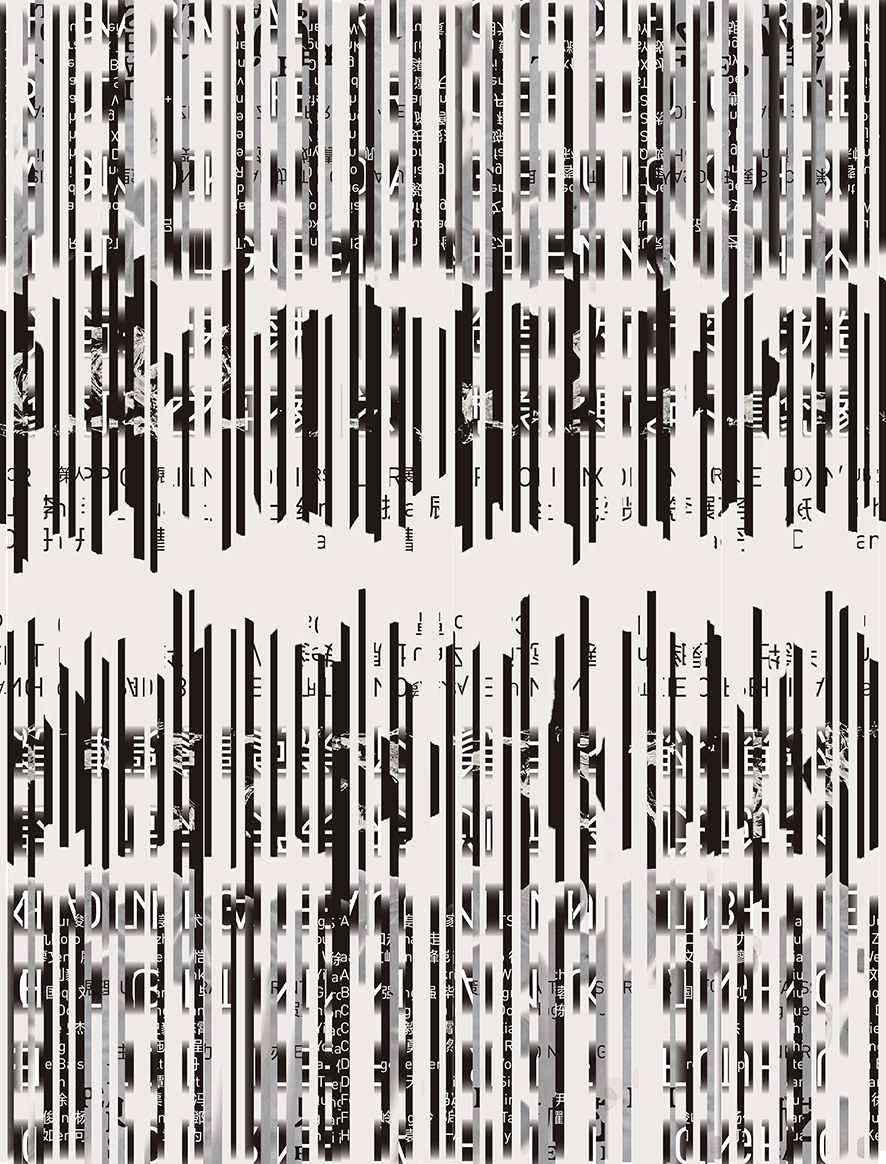
|
Shi Yong Shi Yong (b. 1963) works and lives in Shanghai, graduated from the Fine Art Department of the Shanghai Light Industry College in 1984. His major solo exhibitions include: “Think Carefully, Where Have You Been Yesterday?” (BizART, Shanghai, 2007) and “Realistic reality: Shi Yong Solo Show” (2577 Creative Garden, Shanghai,2007). “The Heavenּ The World, Solo Show by Shi Yong in 2 Parts” ( ShanghART H-Space, Shanghai, 2004)and Pingyao International Photography Festival (PIP), Project by Shi Yong, Pingyao, Shanxi. His recent selected group exhibitions include: “V&P” (ShanghART Beijing, Beijing, 2014), “Study” (Jewelvary & Art Boutique, Shanghai,2014) , “Just As Money is the Paper” ( The gallery is the room, Osage Shanghai, 2014), “Off Site Programme, Slient Film”,( Ikon Gallery, Fletchers Walk, central Birmingham,U.K, 2014). |
How Future looks like? I often have a kind of desire to blur writing and figures, to abstract it even to the point of erasure. Only after concealing something can you become interested in investigating the result of hiding it. Here, I longitudinally cut and reorganised this poster in the name of art. The information it contains has not disappeared, but it is hidden in an anonymous form in 113 re-cut and re-ordered strips: the future is so beautiful, and so abstract. |
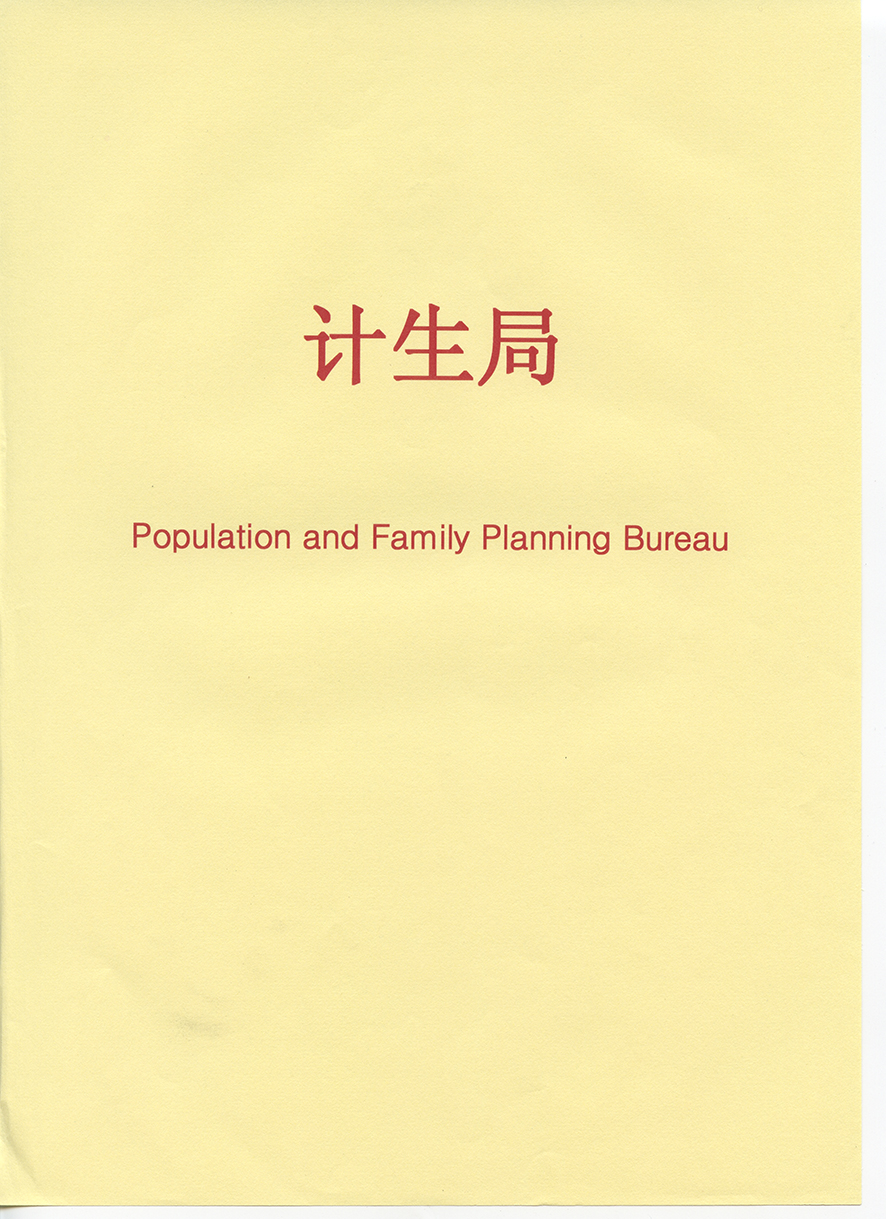
|
Song Ta |
Population and Family Planning Bureau This is part of the 2009 work, “Functionary” – I took the name of a work unit from one of 61 county-level government administrative offices. Its full name is “Office of Population and Family Planning”. It is a particular government department that has arisen from a particular period of history in China. |
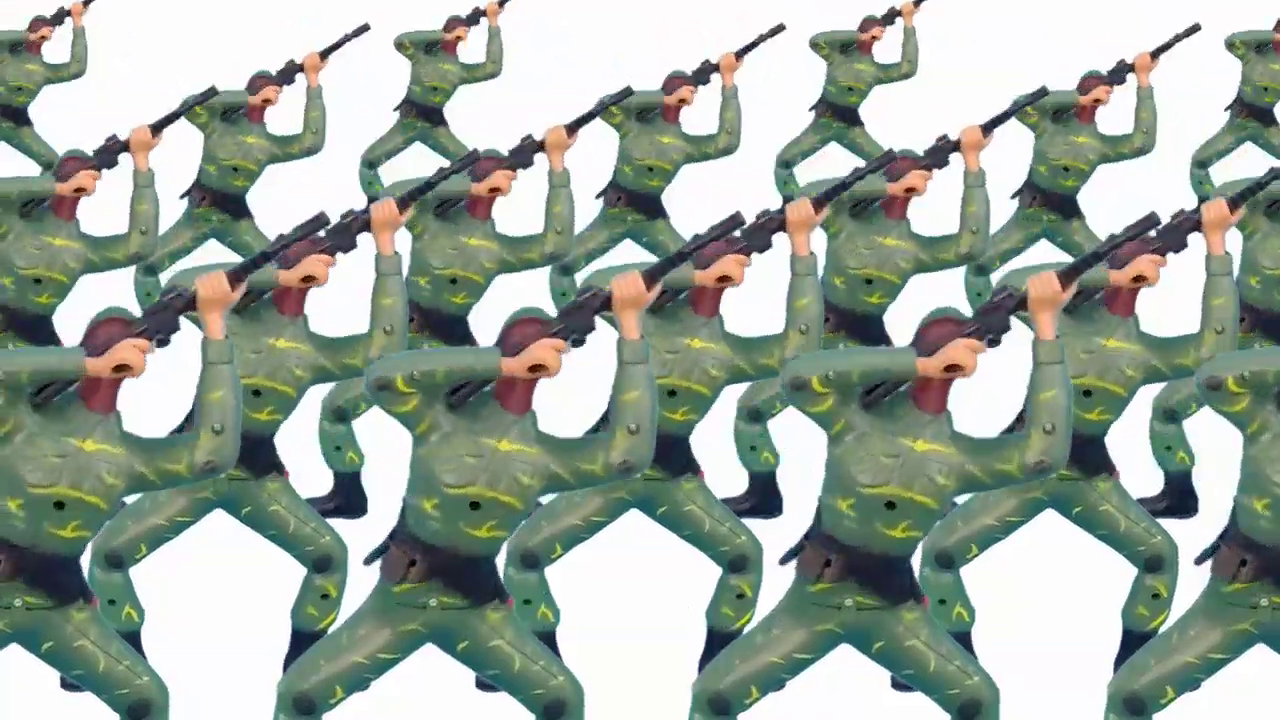
|
Stefan Baltensperger & David Siepert Stefan Baltensperger (*1976) grew up in Zurich, Switzerland. David Siepert (*1983) grew up in the Black Forrest in Germany and later moved to Switzerland. Both Stefan and David attended the Basel School of Fine Arts, and hold a master degree from Zurich University of the Arts. They began collaborating in 2007 while still being undergraduate students and work from their Zurich studio ever since. Baltensperger + Siepert’s artistic practice reflects critically upon social, cultural, and political issues. By immersing themselves in diverse systems, they aim to expose and manipulate them. Since 2010 the focus of their work has been on political matters and on developing an understanding of postcolonial structures. |
Dancing Queen The title of Stefan and David’s latest work comes from ABBA’s 70s disco classic of the same name, which also plays in the background of the recording. In a scene in the video, electronic toy soldiers crawl forwards. Occasionally, a soldier will halt, pretending to fire a gun before carrying onward. In “Dancing Queen”, Stefan and David have opened for the audience a seemingly simple but greatly profound horizon, questioning the everyday practice of violent military force. |
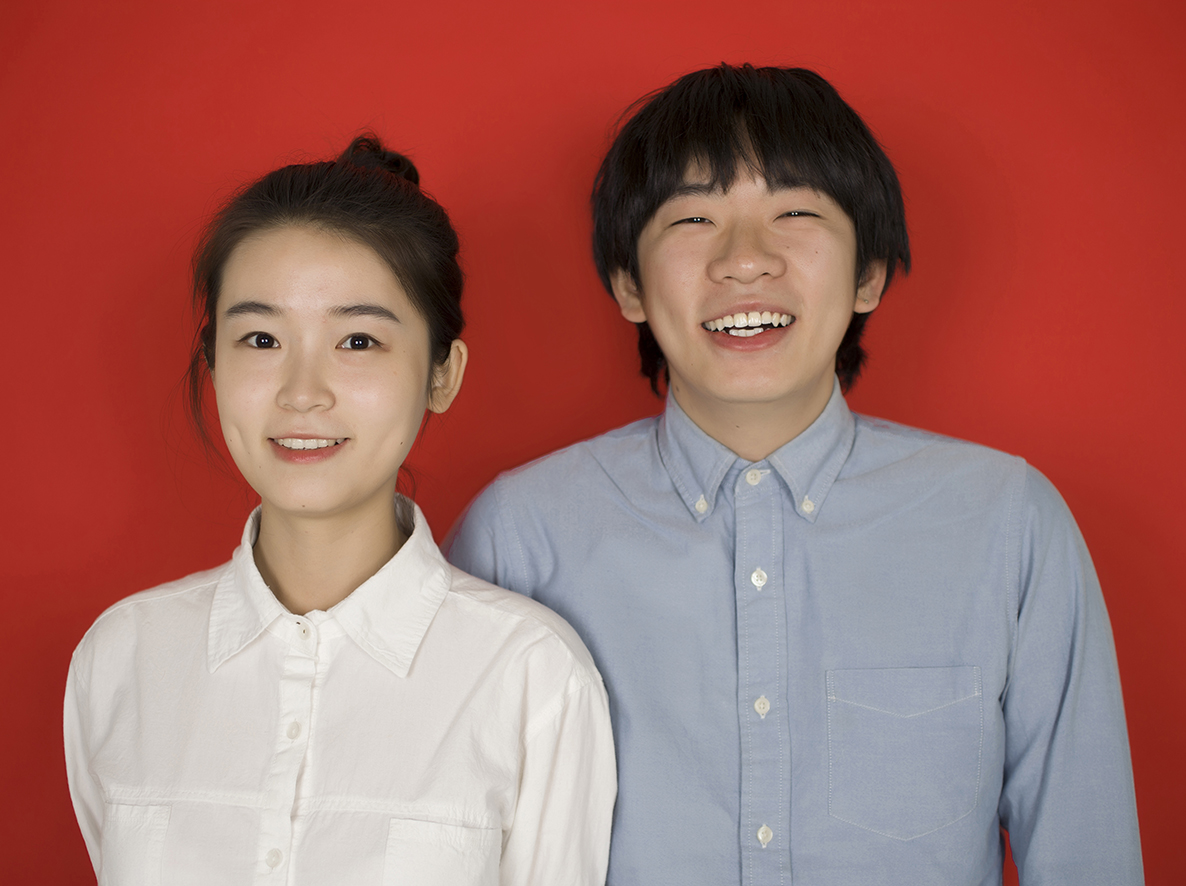
|
Tan Tian Tan Tian (b. 1988, Beijing) received his BA from Kingston University of Fine Art, London in 2009. Currently lives and works in Beijing. His recent shows include the The 2nd ‘CAFAM Future’ Exhibition (2015), CAFA Art Museum, Beijing, China, ‘From The Manic Ego To The Wise Superego’ (2014), Times Art Museum, Beijing, China, ‘Start Ups’ (2014), Matthias Kuper Gallery, Beijing, China, ‘Attached’ (2014), Force Gallery, Beijing, China, ‘Memo II’ (2014), Whitespace, Beijing, China. |
Get married first, then achieve goals This work is part of the fifth section of my project “How I Became A Modern Artist”, entitled “Fundamental Qualities Of A Modern Artist”. It’s a copy of my marriage certificate. As I see it, having a stable household, not causing trouble for oneself, and having support in one’s life is an extremely important factor in allowing modern artists to focus on creative work. Because of this, “First Wive, Then Thrive” is a fundamental quality one must have to become a modern artist. |
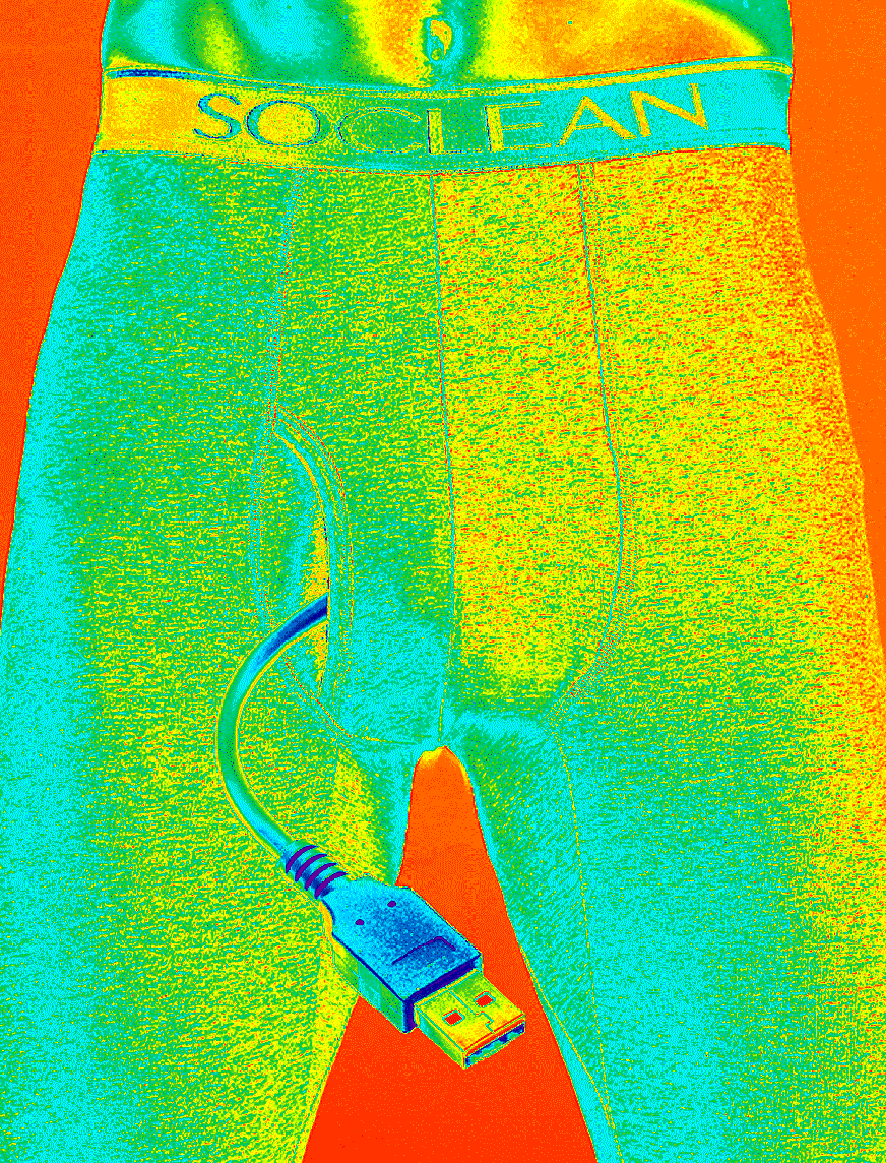
|
Wu Juehui Wu Juehui (b. 1980), is the cutting-edge artist of China’s new media art, working with cross-border-amalgamation, concerning interactive art, bio-art, media theater to show the plurality of art creation. Wu’s saying that “Art as the antimatter of science and technology.” shows his perspective upon the relation between art and science. In recent years, he focuses on the “potential interface” between art and science, between body and media in collaboration with institutes such as Tsinghua University, Swiss Federal Institute of Technology, Hangzhou Dianzi University. Since 2009, Wu has been trying to intrude and reproduce the sense organs via popular technology in the “Organ Project”. In the same year, in collaboration with TASML, he started the long-term art project “Brain Station” based on BCI (Brain-Computer Interface) technology. Wu has participated in several national and international media art exhibitions and festivals, such as “ZERO1 Biennial”,” Translife – International Triennial of New Media Art”,“Synthetic Times – Media Art China 2008″, “Creators Project 2012”, “SHIFT- Electronic Arts Festival”. In 2010, Wu Juehui and Shao Ding founded the art group “MeatMedia”, focusing on the “Emotional Interface” in an attempt to find a balance between the“Dry media”and the“Wet media”. Wu Juehui is also a co-founder of “UFO media lab” – the leading new media artist collective in China that focuses on the social application of new media art. In 2014, Wu starts using several media to simulate the deviations during the procedure of creating, resulting in a series of creatures of meaningless, namely the ‘Mistake Creature’. |
If I were USB If I were a flash drive, if the future still has flash drives. |
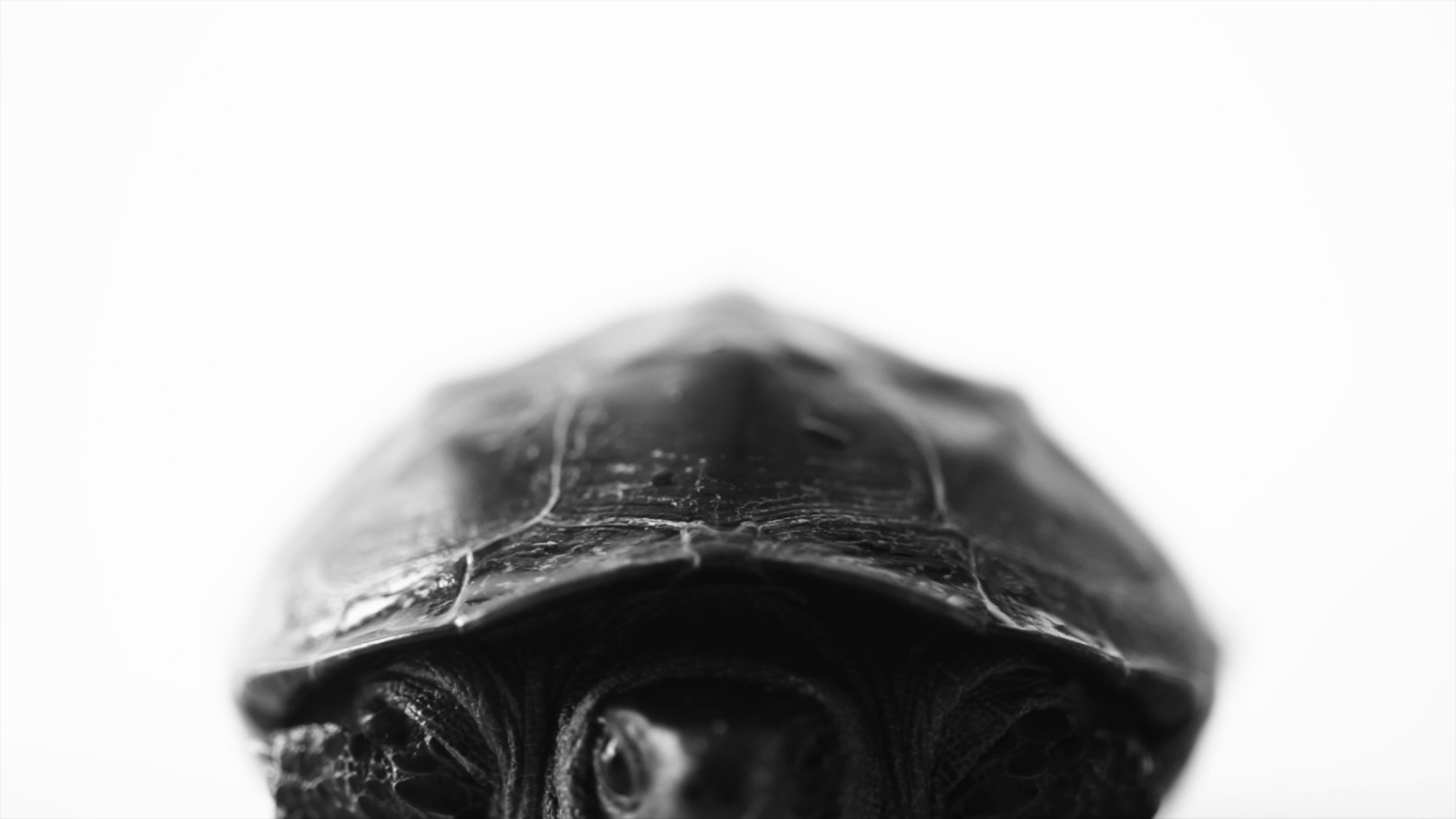
|
Xu Qu Xu Qu (b. 1978, Jiangsu Province) graduated with MFA in Fine Arts and Film at Braunschweig University of Art, and currently lives and works in Beijing. From the “51 m2 #11” at Taikang Space to the project “Xi Sha, South China Sea Projekt #1” and the “Upstream”, Xu Qu’s art practice has always been discussing the aesthetic considerations behind social connections through direct movements. However, although he adopts direct movements as before, he attempts to get rid of any unnecessary elements that distract the theme, using the minimalism to simplify the picture. The ultimate goal of the artist is to examine the ultimate target of anthropic aesthetics, and what kind of values and thoughts that the confrontation or mixture of different aesthetic experiences would bring us in different eras. |
Custom I “Habit I” describes the process by which a tortoise, flipped onto its back by someone’s foot, struggles to flip itself over. It investigates the subtle exchange between humans and animals. |
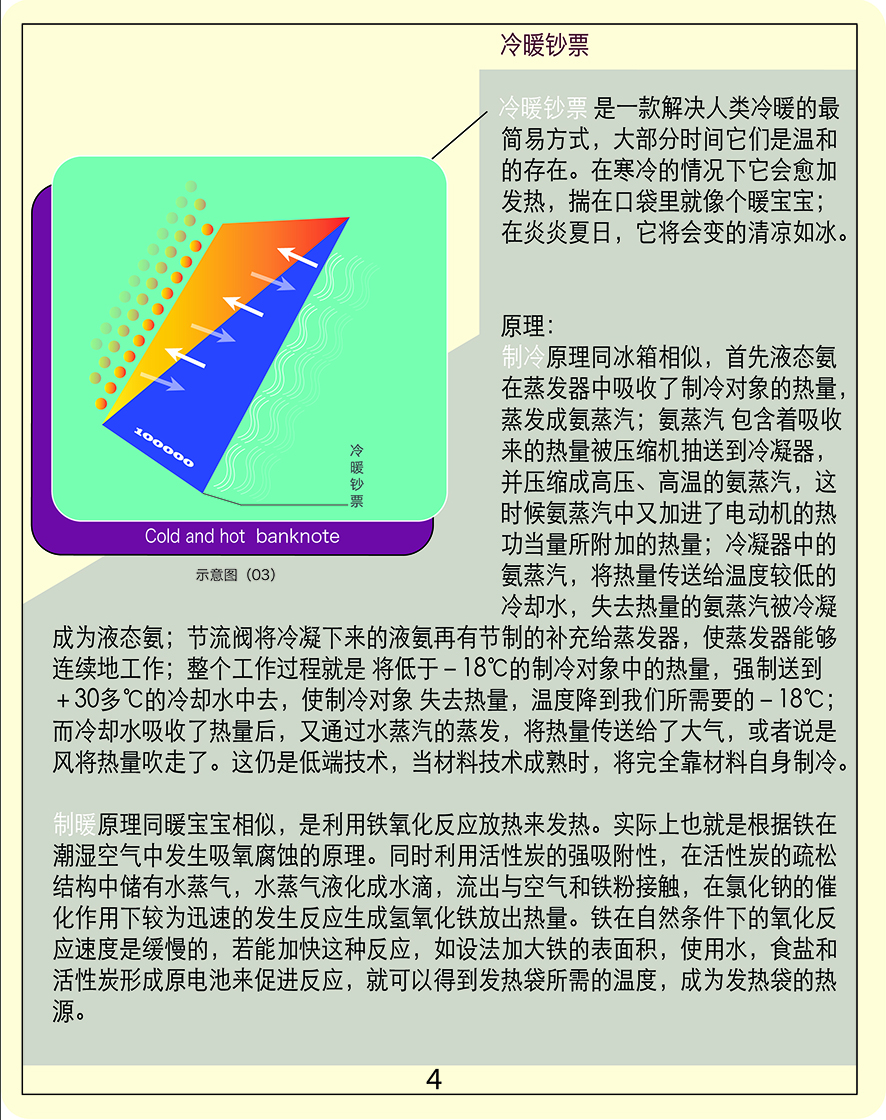
|
Yang Junling Yang Junling (b. 1986, Tianjing) graduated from the New Media Department of the China Academy of Art in 2008, currently based in Beijing. He is co-founder and member of Double Fly Art Center, and member of company. Selected group and solo exhibitions include: ‘POLYPHONY II’ (AMNUA NanJing China, 2014), ‘GET IT LOUDER’ (Beijing, 2014), ‘Wu Qing Exhibitio’ (HeiQiao Transparent-space, Beijing, 2014), ‘The 8 of Paths’ (Berlin, 2014 ), ‘WAVE’ (18 Gallery at Bund 18, Shanghai, 2013). |
Future Banknote If one limits oneself to thinking solely of the Internet as the future of money, paper money as a medium of exchange ceases to be a necessity. However, expanding the scope of future technology allows paper money to go more in the direction of science fiction. |
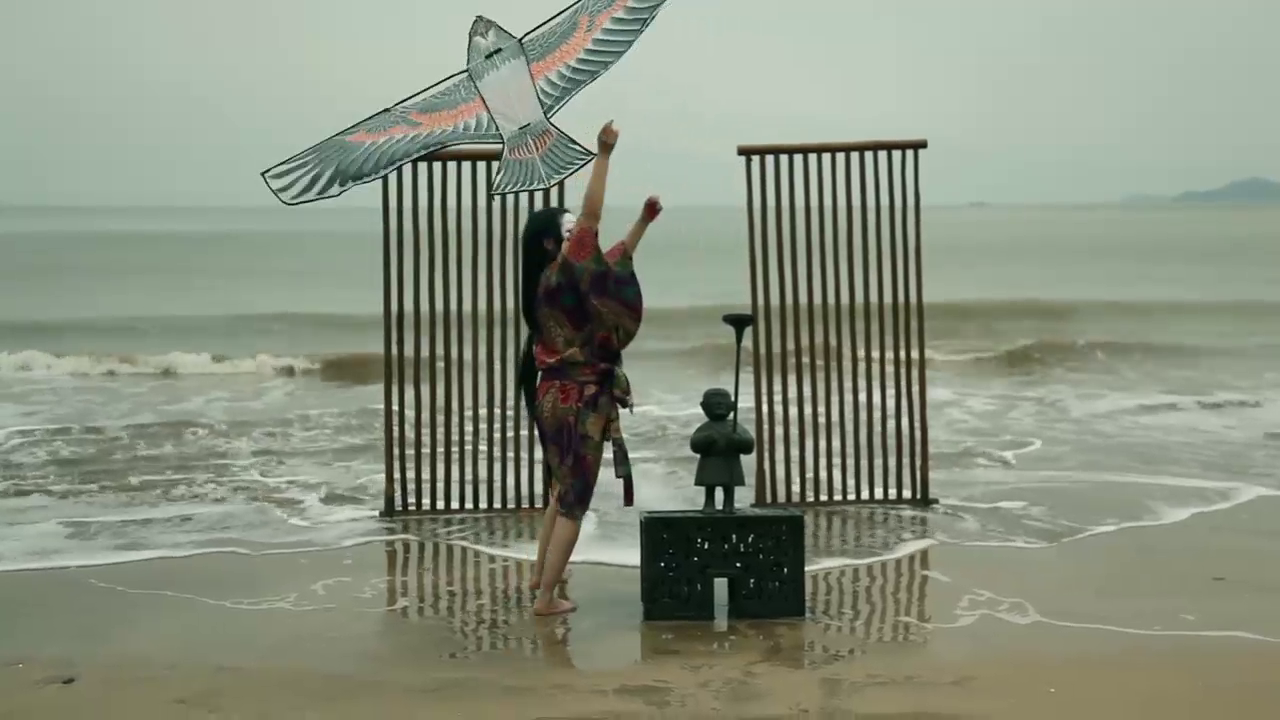
|
Yuan Keru Yuan Keru was born in Hangzhou in 1990, she received her BAF from New Media Arts Department of China Academy of Art. She is currently lives and works in Beijing and Hangzhou. Recent selected exhibitions include: ‘Brewing’, Free Creation of ‘Installation: The Creativity of The Lingering Art’ (Fine Arts Literature, 2014), ‘Sound of The Deity, A Salted Encounter’ (Art Sanya, Sanya, Hainan, 2014). |
Monoaware Reflecting on humanity, one never ceases to ponderthings that fly – it is a practice as old as religion. They are most profound and graceful things, always in a contradictory, intimate relationship. Like rock, sand, men, women, skin, kisses, soil, memory, bodies, and fading scars. Thus brightness, the seaside, releases the seahawk into the sunset and back. |
Originally existing as an exhibition in print and online curated by Cao Dan and Li Zhenhua for LEAP – the art magazine for contemporary China, MOMENTUM now brings ‘Creating the Future: Thinking about the Unthinkable’ to Berlin in real time and three-dimensional space, to literally LEAP off the page, off the screen, and into our gallery space.
After an enduring focus on so-called ‘Net Art’ since the mid-90s, which saw artists challenging the necessity or relevance of physical exhibition spaces, in recent years the term ‘post-internet art’ has come to dominate art discourse. Widely misunderstood, this term does not imply that we have in any way moved beyond net-based technologies – the main ground for the strong resistance to this term. Like ‘post-modernism’, and with a similarly counterintuitive and misleading choice of terminology, the ‘post’ in ‘post-internet art’ refers to a revisiting or reworking of the methods derived from internet art, rather than a break from it.
Whereas Net Art dealt directly with new digital strategies and mainly existed on the web itself, post-internet art applies these methods into a much wider range of fields, often to create physical objects in the real world.
This exhibition can be positioned as a curatorial exploration of this tendency or need to create crossovers between the on and the offline. Integrating the printed and digital versions of the exhibition within the now physicalized exhibition itself, it presents one and the same selection of works in the three main forms by which the public comes into contact with art today; a mise en abyme of exhibition-media with a gallery show of a virtual exhibition. Within the curators’ aim to create “a microcosm of the relationship between art and media”, at MOMENTUM the exhibition allows for an in-depth consideration of how pre-internet, net, and post-internet media may affect this relationship. It is a threefold exhibition – a series of déjà vu’s in the real, the reproduced and the virtual.
— Isabel de Sena
A LETTER TO THE FUTURE
An Exhibition Online and On Paper
Cao Dan
“Thinking about the Unthinkable,” comes from a work of the same name published in the 1960s by preeminent American futurist and Hudson Institute founder Herman Kahn. Kahn’s text analyzes and imagines the possible aftermath of nuclear war, directly dealing with various specific crises and circumstances with which mankind might be faced, all while maintaining a typically optimistic futurist faith in the possibility of this future human society to find a path to survival. Over fifty years later, we are in the midst of Kahn’s “future”: on one hand, improvements in democracy and science have brought mankind unparalleled safety and well-being, with continued progress in our control of the outside world giving a sense of exponentially increasing prosperity; on the other hand, the dangers of nuclear war, limited resources, climate change, pollution, and health epidemics are omnipresent, with anxiety about the future affecting our conceptions of identity, faith, and ethics, as well as other more subtle and intrinsic notions. How should we think about the future? Can the immediate or distant future really be thought of? Can our thinking affect the future? … Questions like these laid the basis for the subject of this exhibition, “Creating for the Future: Thinking about the Unthinkable”.
This exhibition has specifically enlisted renowned curator, Li Zhenhua to help LEAP and LEAP LABS to organize both the online and print exhibitions. The theme of this years exhibition is “Creating for the Future: Thinking about the Unthinkable.” For this year’s special edition, we have invited 25 young artists to use their own idea of an “image” to create a “Letter for the Future.” These images may end up being a composition of frames of memories made in order to connect to an unknown world; they may implore conceptual methods to create a realistic narrative; they might even delve into the realm of the not yet existent in order to explore the boundaries of reality and imagination… The lives and creations made by artists of this new generation are intertwined with the multitude of images that barrage them daily from all corners of the earth. It is both the most natural and most comfortable way through which these artists can express themselves.
CREATING FOR THE FUTURE
Li Zhenhua
From print media to the content and development of apps, art has been pushed forward by the transmission of information, and while small, this event exists as a microcosm of the relationship between art and the media. Perhaps not even Mcluhan or Neil Postman could predict our current reality: today’s media now extends beyond what is real and has delved into a manifestation of self-obsession. But, then again, maybe this is a reality they predicted at one time. If we are to say that the transmission of information is what brought about the current state of the world –and with it modern civilization— then isn’t it too hollow to say that the only thing the so-called second and third revolutions brought about is the vague concept of the “information age”?
Revolution often comes quietly, but it’s not because nobody is paying attention. Instead, it’s because we as people naturally accept a certain reality, one that accepts the creation of change. The information age began similarly without a sound. Just like the upgrade from a 286 to 386 computer, the pursuit of increased efficiency has caused us to crave new technology.
Besides adapting to the times around it, art creates its own spirit within an era. At the same time, art –as a force that existed before this time, and which will continue to exist after— brings with it both skepticism towards the present and worries about the future. This self-conflicting reality is one which artists have been unable to untangle, even as art begins to blur the boundaries between it and other disciplines –boundaries that it gets close to, but never crosses.
All the artists invited to “Creating for the Future” exist within this specific reality and are trying to find a way to respond to its current situation, or the situation of the future it will create.
Artists and their works are diverse in the way in which they are able to give us opportunities to think at exactly the right moment. To make us think: how will the future unfold? At the same time, art can also remove itself from these constructs, as if it were passing through the universe overcoming any sense of time or space. Art transforms media into becoming a reflection or observation. Through changing existing relationships and fostering new ones, art can create new connections that push our imaginations forward with an inertia that only comes when one has expectations for the future. When that scale tips, it’s like starting a landslide.
I once planed a “future media” issue for Vision Magazine, in which I hoped to discuss the role of print media. With this current project, however, I hope to be able to derive more specific creative methods from the artists themselves, and look to better understand how to best link print media and multi-media software. Inevitably, artists must be the ones to complete this practice. However, Cheng Ran’s scripts, Hu Weiyi’s imprints, Xu Wenkai’s fictitious landscapes, and Quynh Dong’s poetry and spaces did not respond to the essence of “Thinking the Unthinkable.” Instead, they focus specifically on working towards a future that is on the verge of occurring. These artists get very close to approaching reality through directly linking the future to the present and therefore bring the subjects of their work into every aspect of their lives. That is not the point of this project. Unfortunately, herein lies the paradox of “Thinking the Unthinkable”: in order to ascertain the future, perhaps hope must come in the form of an escape from reality. The protagonists of most stories do not make it to the future. When their moment comes to approach it, they look back to the earliest ancestors of humanity or moments from times past, yet towards the future their thoughts are nothing more than emptiness.
WITH THANKS FOR GENEROUS SUPPORT IN REALIZING THIS EXHIBITION
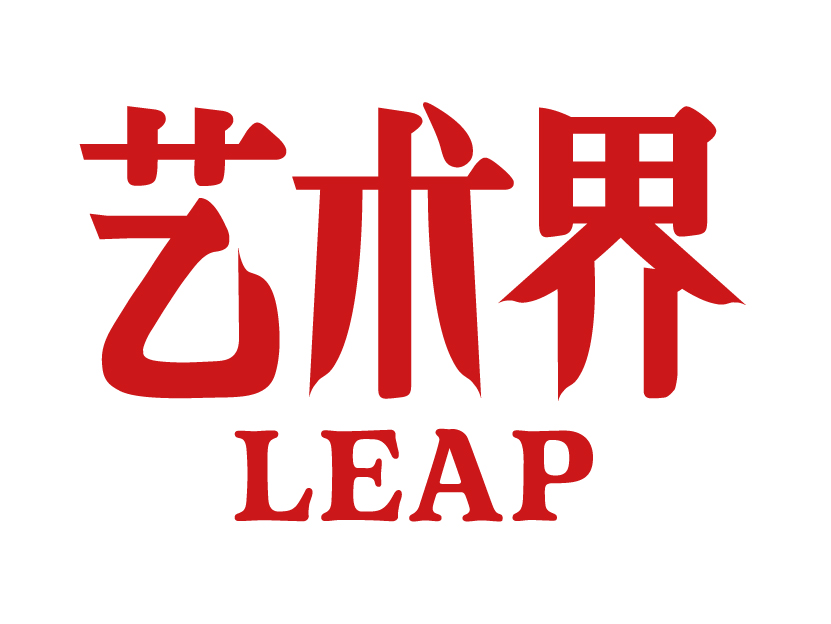 |
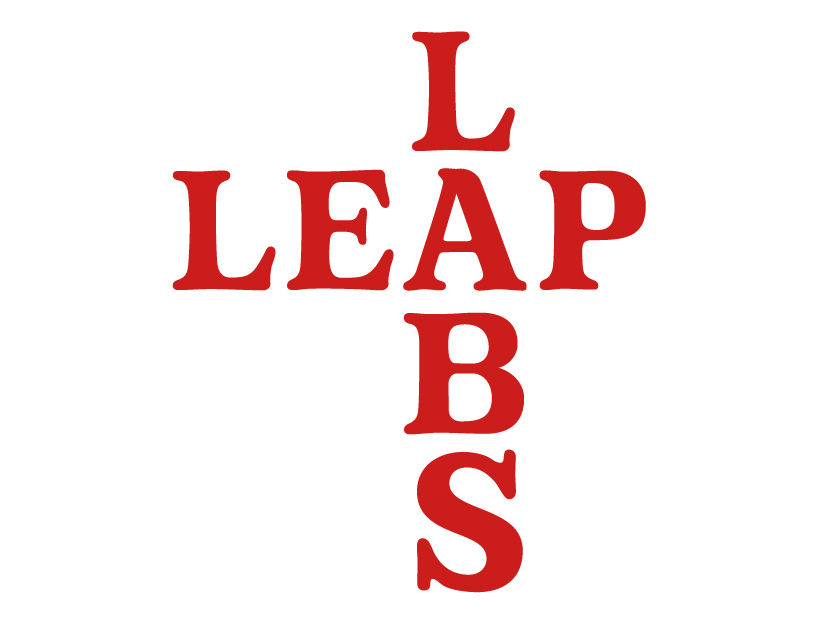 |
||
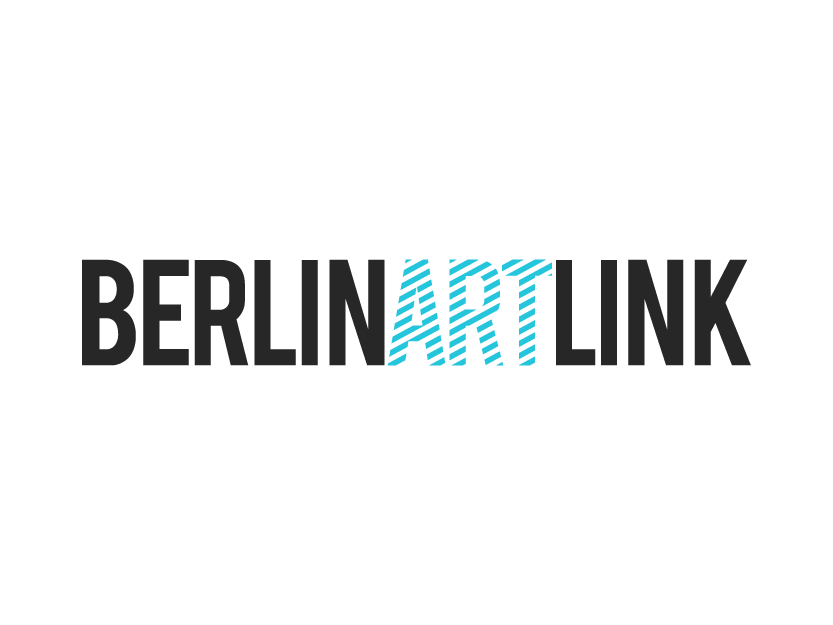 |
 |
 |
 |
THE OPENING OF THE EXHIBITION
(photos by Marina Belikova)
THE INSTALLATION SHOTS
(photos by Marina Belikova)
no images were found


 Back to Index
Back to Index